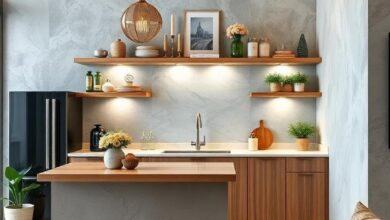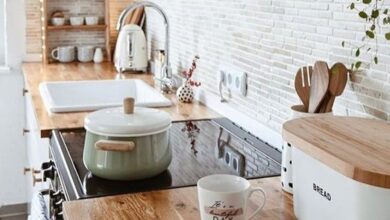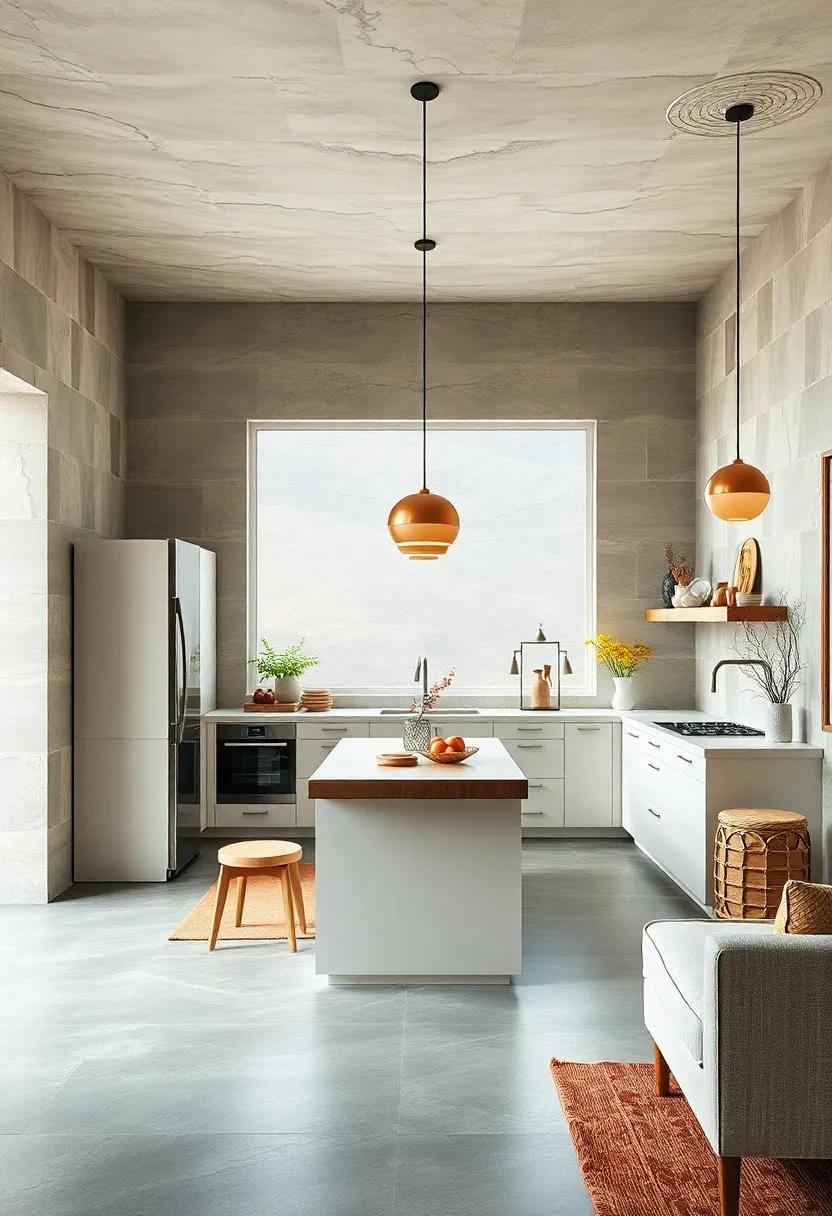
Crafting Culinary Harmony: The Art and Science of Kitchen Layout Design
In teh heart of every home lies a sanctuary of creativity and nourishment—the kitchen. It is a space where flavors meld, aromas dance, and culinary masterpieces come to life. Yet, behind every triumphant dish lies an often-overlooked component: the kitchen layout. Crafting a well-designed kitchen is both an art and a science, requiring a delicate balance of aesthetics, functionality, and flow.In ”,” we embark on a journey to explore how thoughtful kitchen design can enhance not only the cooking experience but also the joy of gathering and sharing. From the strategic placement of appliances to the meticulous arrangement of countertops and cabinetry, join us as we delve into the principles that transform ordinary kitchens into harmonious culinary hubs, where every meal becomes an chance for connection and creativity.
Crafting the Perfect Triangle: The Relationship Between Sink, stove, and Refrigerator
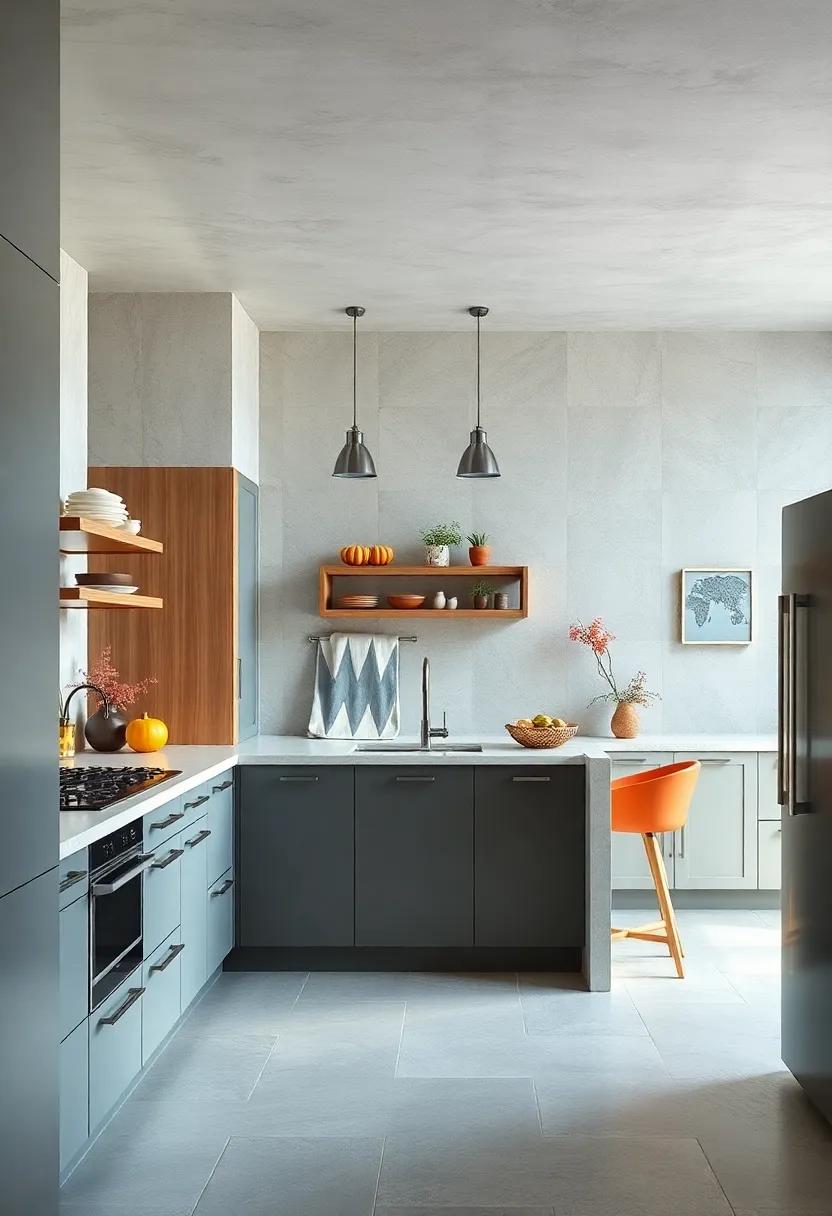
When designing a kitchen, the arrangement of the sink, stove, and refrigerator is paramount, succinctly forming a functional triangle that enhances workflow and ergonomics. This design concept, known as the kitchen work triangle, places the three key appliances at the vertices, optimizing movement and minimizing excess steps during food readiness. A well-crafted triangle allows for seamless transitions between tasks,creating a harmonious cooking environment. Key considerations include:
- Proximity: Each point of the triangle should be no more than 9 feet apart, preventing excessive strain during cooking.
- Accessibility: Appliances should be easily reachable, ensuring that the chef has swift access to water, heat sources, and stored ingredients.
- Flow: The layout should support natural movement patterns, reducing clutter and enhancing efficiency.
Implementing this design wisely requires attention to detail. For instance, integrating a prep area near the sink or stove can significantly streamline the cooking process, while thoughtful storage solutions can keep necessities like utensils and spices within arm’s reach.consider the following table for a swift reference on ideal spacing:
| Appliance | Ideal Distance (ft) |
|---|---|
| Sink to Stove | 4 – 9 |
| Stove to Refrigerator | 4 – 9 |
| Refrigerator to Sink | 4 – 9 |
Flow: Designing an Efficient Culinary Path for Your Kitchen Experience
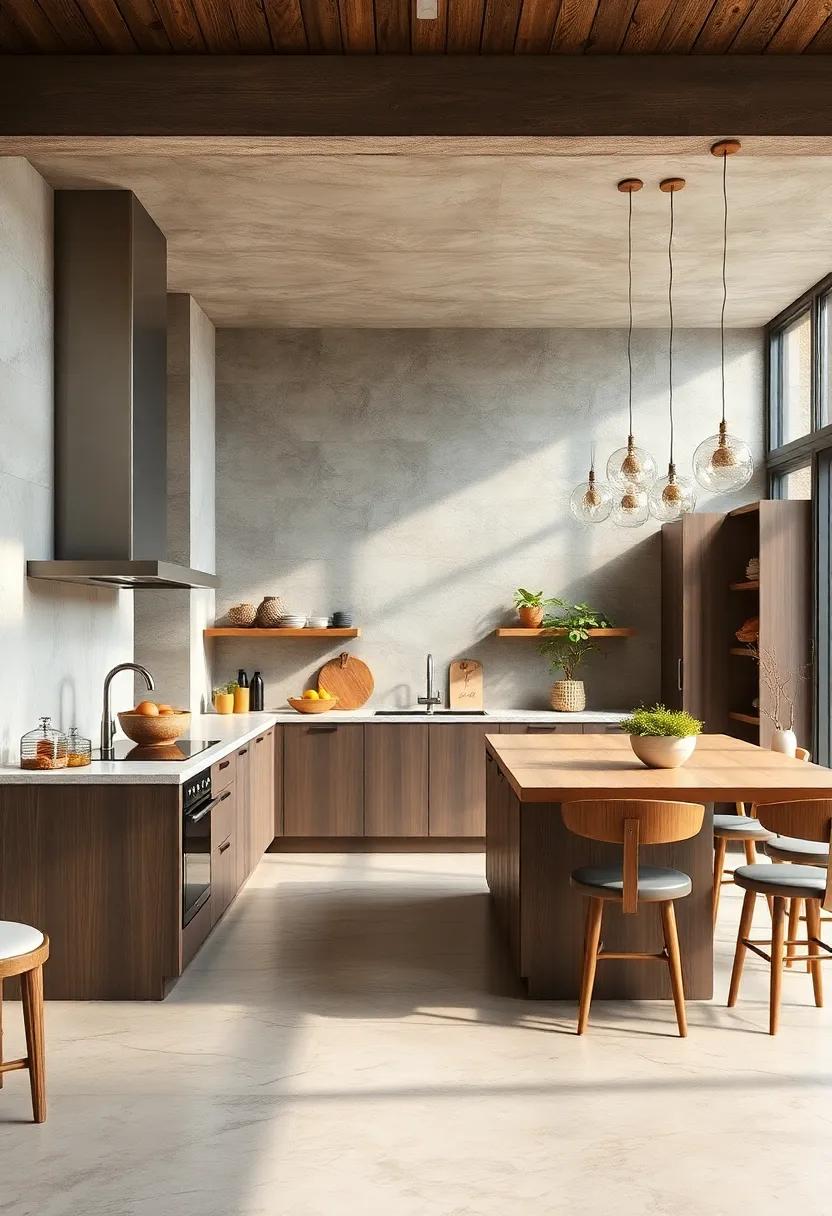
creating a seamless culinary experience demands a thoughtful approach to kitchen layout design. From the moment you walk in, the flow should guide you intuitively through your preparation tasks, transforming cooking into an enjoyable art form. A well-planned kitchen encourages movement and efficiency, allowing ingredients, tools, and cooks to coexist harmoniously. Consider incorporating these key elements into your design:
- Work Zones: Organize your kitchen into distinct areas for preparation, cooking, and cleaning, enhancing productivity.
- Easy Access: Position frequently used items within arm’s reach, reducing unnecessary movement.
- Clear Pathways: Design wide, unobstructed paths between work zones to facilitate smooth transitions.
Utilizing an efficient layout not only boosts your cooking speed but also fosters creativity by minimizing distractions and physical strain. as you cultivate this culinary sanctuary, it’s essential to think about the interaction between appliances and space. A thoughtful table layout can also assist in visualizing equipment placement. Here’s a simple guide to help you decide:
| Appliance/Area | Optimal Placement | Reasoning |
|---|---|---|
| Stove | Near prep area | streamlines transition from prep to cooking. |
| sink | Central location | Facilitates easy washing and preparation. |
| Refrigerator | Close to entrance | Minimizes steps for ingredient retrieval. |
Zoning In: Creating Dedicated Areas for Cooking, prep, and Dining
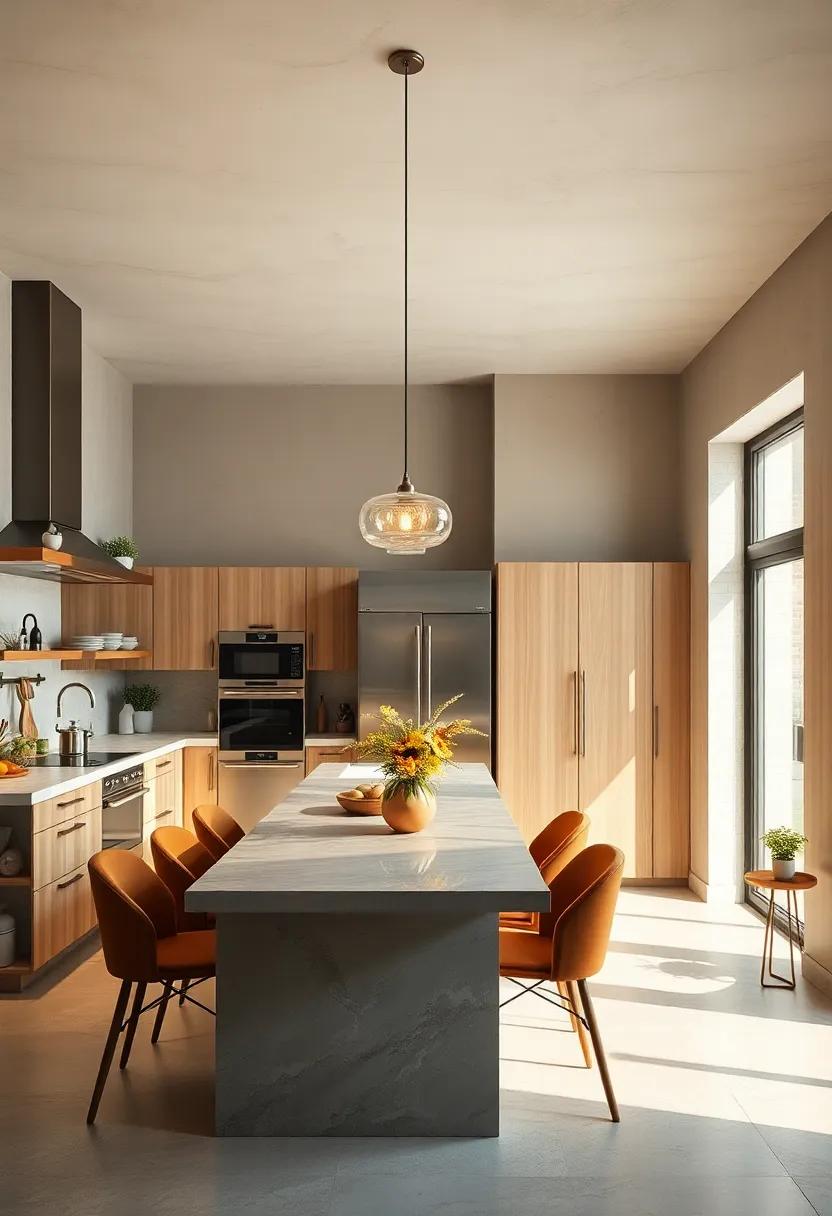
Designing a kitchen with dedicated zones is essential for both functionality and aesthetics. By creating specific areas for cooking, prepping, and dining, you can streamline your culinary experience while enhancing the overall flow of the space. Consider implementing the following zones to maximize efficiency:
- Cooking Zone: includes appliances like the stove,oven,and microwave,ideally located next to one another.
- Prep Zone: Features ample counter space, cutting boards, and storage for utensils, situated close to both the cooking zone and refrigerator.
- Dining Zone: A comfortable area with tables and chairs, ideally nearby the prepping and cooking areas for smooth transitions during meal times.
To visualize the layout and ensure a harmonious balance,utilizing tables can be a great strategy. Consider this simple portrayal of essential kitchen elements:
| Zone | Key Features | Suggested Location |
|---|---|---|
| Cooking | Stove,Oven,Microwave | Central area for easy access |
| Prep | Counter Space,Utensils,Storage | Next to Cooking Zone |
| Dining | Table,Chairs,Lighting | Adjoining space for flow |
Embracing light: The Importance of Natural Illumination in Kitchen Spaces
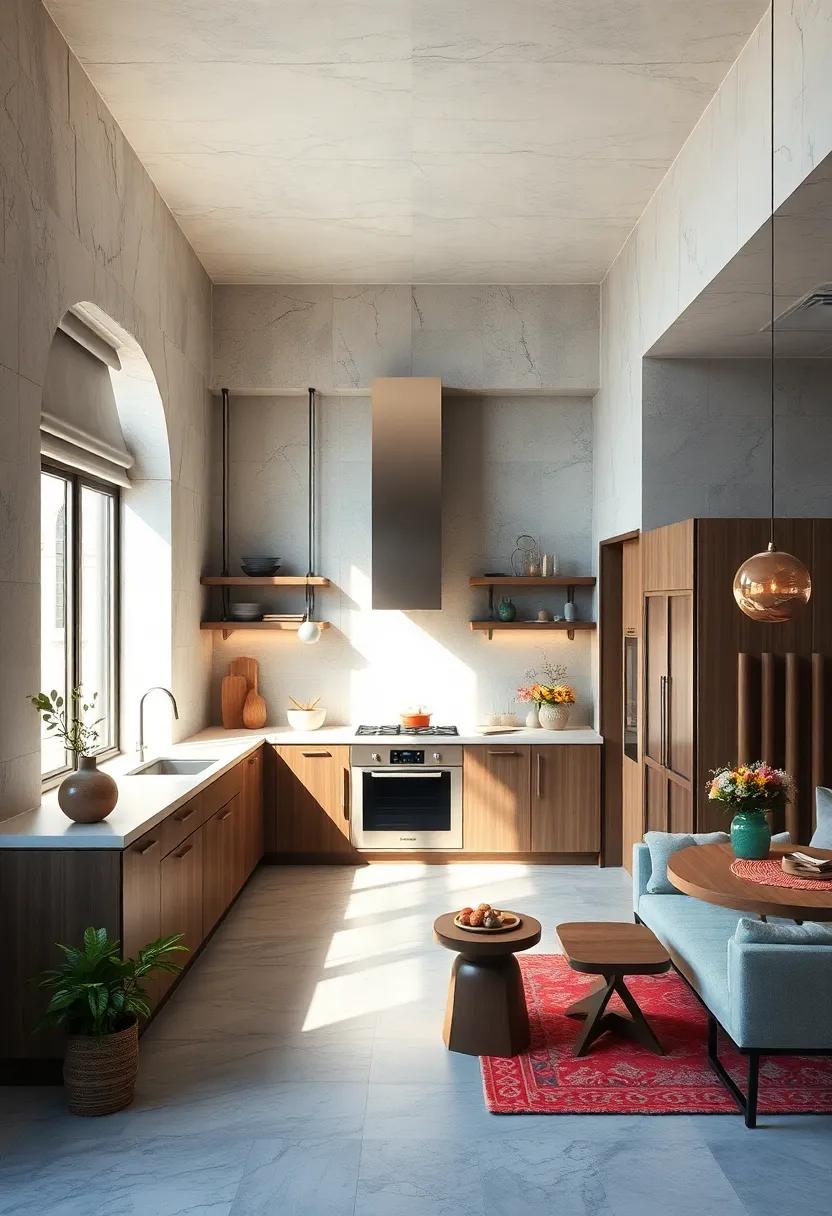
In the canvas of culinary creativity, light plays a pivotal role in accentuating the kitchen’s ambiance.Utilizing natural illumination not only enhances the aesthetic appeal but also boosts functionality as it invigorates the cooking experience. Daylight filtering through windows creates a cozy yet vibrant atmosphere, making food preparation more enjoyable. By integrating expansive windows, skylights, or glass doors, kitchen spaces can become dynamic environments. Benefits of embracing natural light include:
- Enhanced Mood: Natural light has been linked to improved mental well-being.
- Energy Efficiency: Reducing reliance on artificial lighting saves energy and lowers utility bills.
- True Colors: Natural light reveals the true hues of your ingredients, promoting a more visually appealing presentation.
A well-designed kitchen harnesses this light to create a harmonious workspace where functionality meets beauty. It’s essential to consider the strategic placement of windows aligned with the kitchen layout to maximize exposure to sunlight.Open floor plans often facilitate this connection between indoor and outdoor spaces. Additionally, the right color palette can amplify the effect of natural light.Consider incorporating:
| Color | Effect |
|---|---|
| Light Whites | Brightens space and creates an airy feel |
| Pale Blues | Invokes calmness and tranquility |
| Soft Greens | Brings freshness, reminiscent of nature |
Texture and Material: Choosing Surfaces That Inspire Cooking Creativity

When constructing the foundation of a kitchen that serves both beauty and functionality, the choice of textures and materials plays a pivotal role. Surfaces can evoke emotion, influence efficiency, and ignite creativity. Consider incorporating a harmonious blend of finishes that cater to your culinary persona.Some materials to contemplate include:
- Natural Stone: Ideal for countertops, offering durability and an organic aesthetic.
- Stainless Steel: Perfect for a sleek,modern look that stands up to the rigors of cooking.
- Wood: Provides warmth and a tactile element,especially effective in cabinetry and shelving.
- Glass: Creates an illusion of space while being easy to clean, great for backsplashes and cabinet inserts.
Textures also play a significant role in stimulating the senses and enhancing the overall ambiance. Smooth and glossy surfaces can inspire precision and attention to detail, while rougher textures may encourage a more rustic approach. Integrating different finishes can create visual interest and allow for varied culinary tasks. below is a comparison of textures that can influence your kitchen experience:
| Texture | Effect on Cooking |
|---|---|
| Glossy | Encourages precision with easy visibility of messes |
| Matte | Makes a warm, cozy environment conducive to casual cooking |
| textured | Offers grip and a tactile experience, great for handling ingredients |
| Frosted | Adds an element of subtle elegance while hiding fingerprints |
Color Harmony: The Psychological impact of Palette on Culinary Inspiration
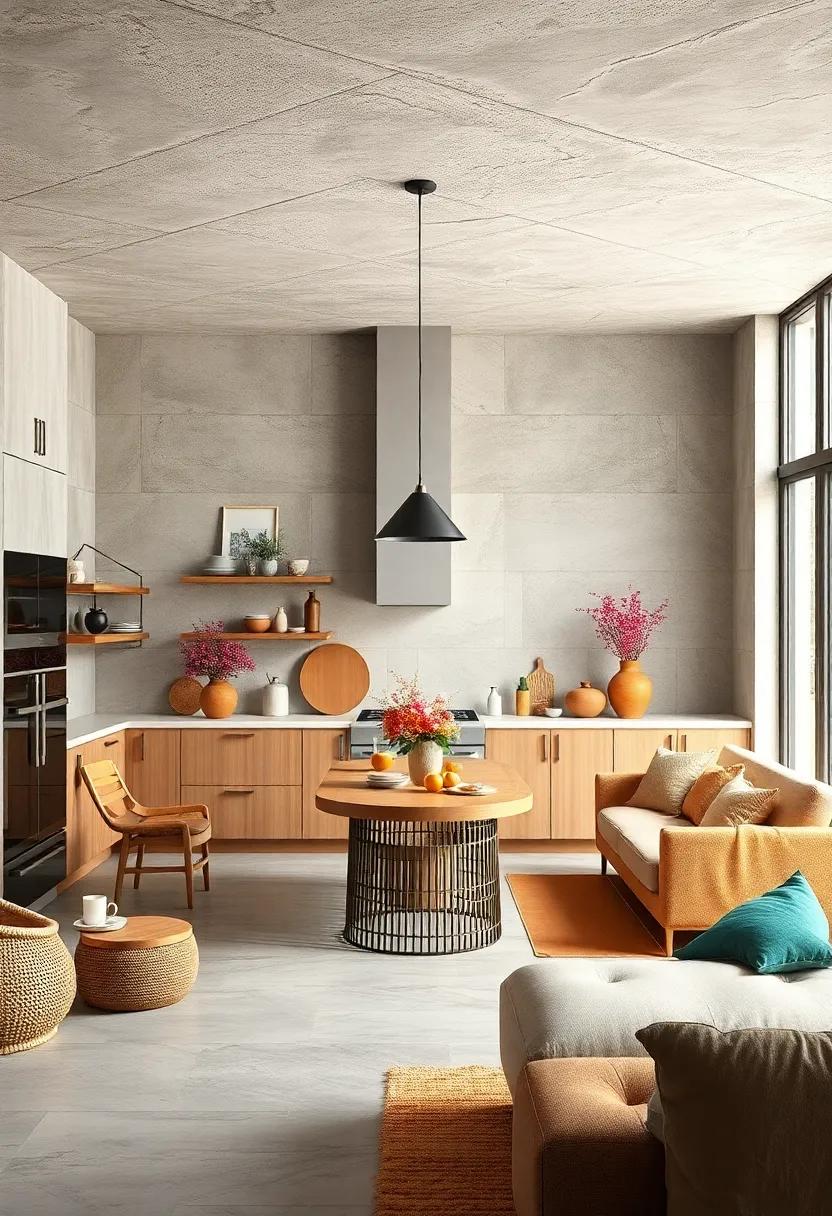
Colors play a pivotal role in influencing our moods, perceptions, and even our appetites. In the culinary world, a well-thought-out color palette can elevate the dining experience by evoking specific emotions and enhancing flavors.When designing a kitchen or dining space, consider warm colors like reds and oranges, which are known to stimulate appetite and joy. On the other hand, cool colors such as blues and greens can promote calmness and tranquility, making them ideal for more relaxed dining settings.The harmony of these hues can create a sensory experience that encourages creativity and exploration in meal preparation.
To achieve a balanced culinary atmosphere, focus on the interplay of complementary and analogous colors throughout your kitchen design. This includes not only the paint on the walls but also the selection of utensils,dishware,and decor. By incorporating a palette that resonates with your personal style while also considering the psychological effects of each color, you can craft a kitchen environment that inspires vibrant cooking experiences. Here are a few examples of how different colors can be utilized effectively in kitchen design:
| Color Type | Psychological Effect | Culinary Inspiration |
|---|---|---|
| Warm Colors | Stimulates appetite, evokes excitement | Pasta sauces, rich meats, and vibrant salads |
| Cool Colors | Promotes relaxation, encourages focus | Herbal teas, light soups, and seafood dishes |
| Earthy Tones | Creates comfort and stability | Root vegetables, rustic breads, and hearty stews |
The Role of Storage: Organizing Essentials for Culinary Ease and Access
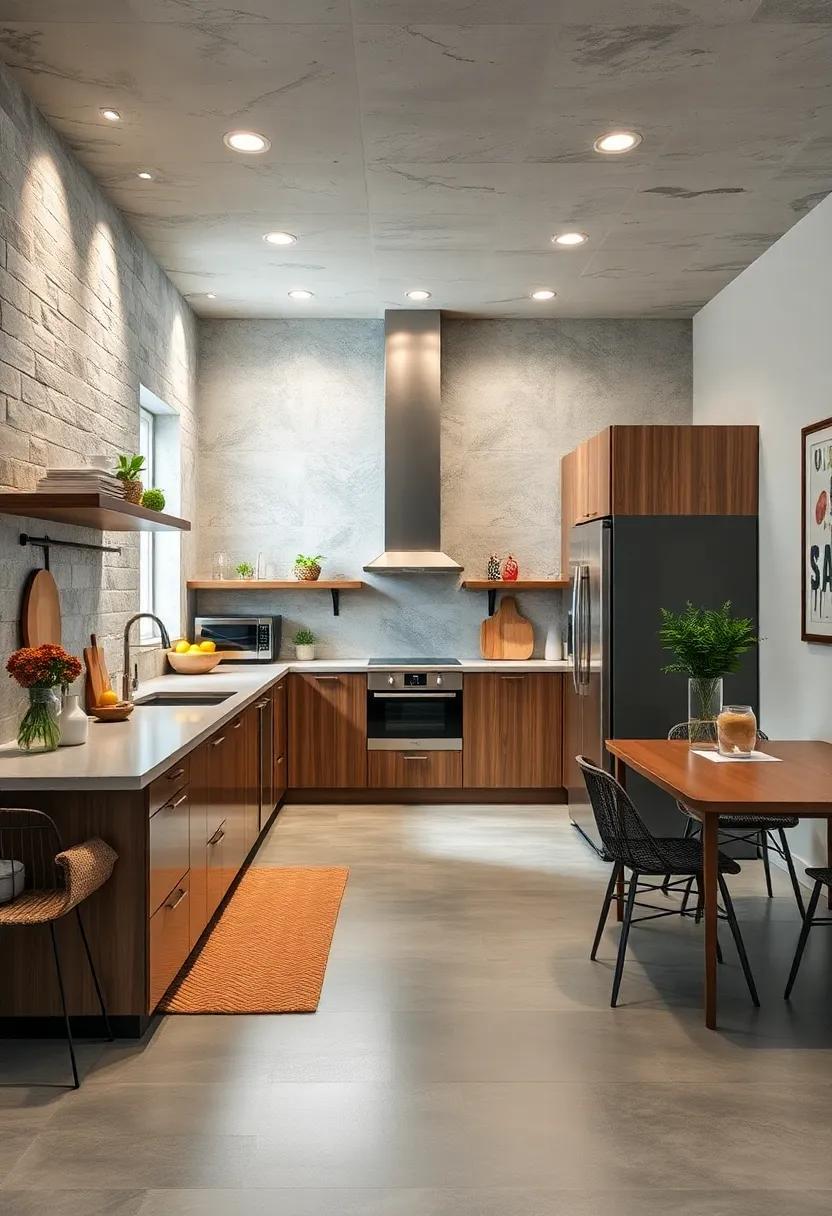
Effective storage is the backbone of a functional kitchen, transforming chaos into a symphony of culinary harmony. When organizing essentials, consider utilizing various storage solutions that can elevate your cooking experience. From spice racks to pull-out pantry shelves, the right arrangement ensures every ingredient and tool is at your fingertips. Implementing clear containers can also add a visual element while keeping everything neatly categorized. Emphasizing accessibility, you can maximize vertical spaces with wall-mounted shelves or hooks for pots and utensils, creating an environment conducive to creativity.
To ensure optimal functionality, a systematic approach to storage can be guided by a few key principles. These include:
- Grouping Similar Items: Keep all baking ingredients together in one area and cookware in another to streamline your process.
- Maximizing Vertical Storage: Use stackable containers and tiered shelves to utilize height.
- Utilizing Drawers Wisely: Incorporate dividers in drawers to separate tools and prevent clutter.
Incorporating these strategies creates a seamless workflow,enabling you to focus on the joy of cooking. Below is a brief overview of potential storage solutions and their benefits:
| Storage Solution | Benefits |
|---|---|
| Pull-Out Shelves | Easy access to ingredients without deep-reaching. |
| Magnetic Strips | Space-saving for knives and metal utensils. |
| Clear Containers | Visibility of contents and reduces waste. |
| Over-the-Door racks | Utilizes underused spaces for additional storage. |
Flexible Furniture: Crafting Multi-Functional spaces for Culinary Adventures
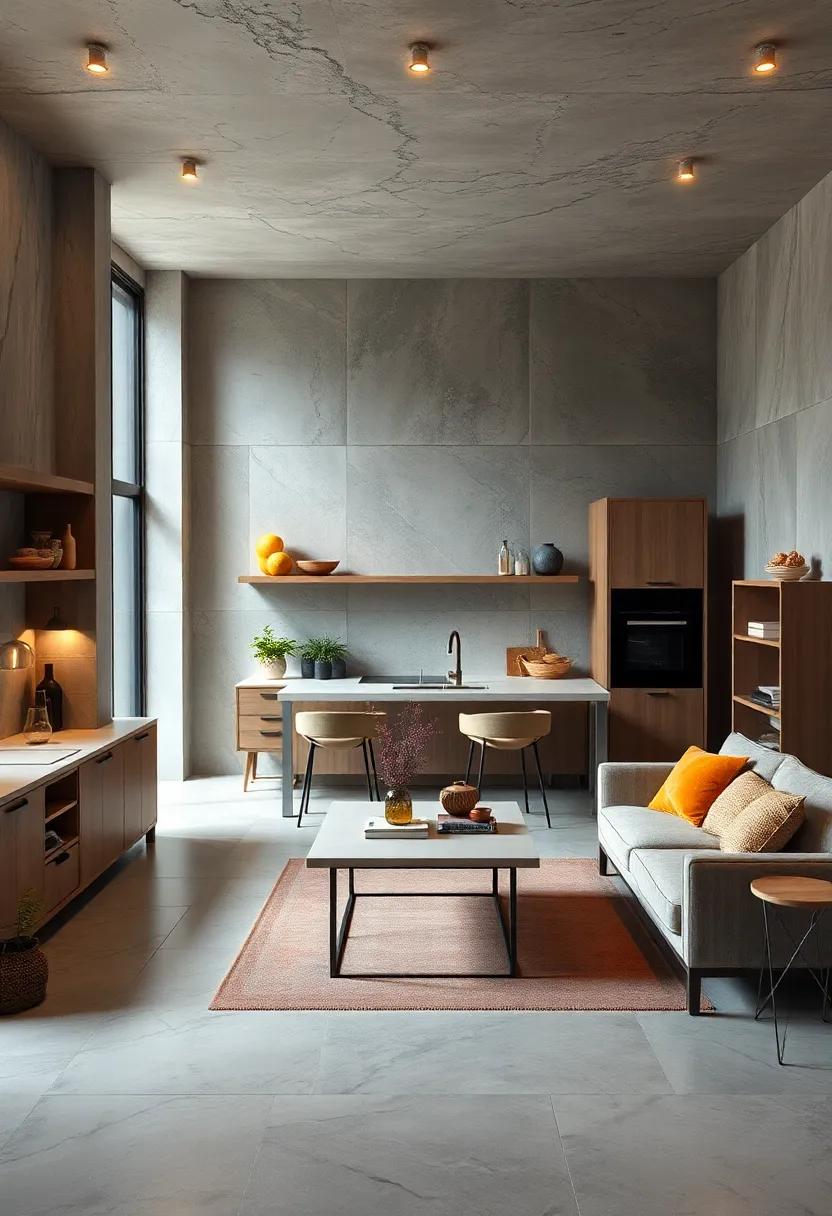
In the realm of culinary exploration, the right furniture can transform a standard kitchen into an inspiring space where creativity flows. Flexible furniture not only accommodates various cooking styles but also allows for seamless transitions between meal preparation, dining, and socializing. Consider incorporating features such as:
- Adjustable islands that double as workspaces or dining areas
- Foldable tables that can expand during gatherings and compact when not in use
- movable carts that provide additional storage and surface space on demand
With multi-functional furniture, you can optimize your kitchen layout efficiently. By placing these versatile pieces strategically, you foster a sense of flow that encourages culinary adventures.For instance, a central island can be surrounded by chairs that pull double duty as both seating and storage. The following table illustrates a few ideas for incorporating flexible designs into your kitchen:
| Furniture Piece | Functionality | Space Saving Feature |
|---|---|---|
| Sliding pantry | Food storage | Can be hidden in a cabinet |
| Drop Leaf Table | Dining/Counter space | Collapses for easy storage |
| Stool with Storage | Seating | Hides kitchen tools |
Incorporating Technology: Smart Solutions for a Modern Kitchen Layout
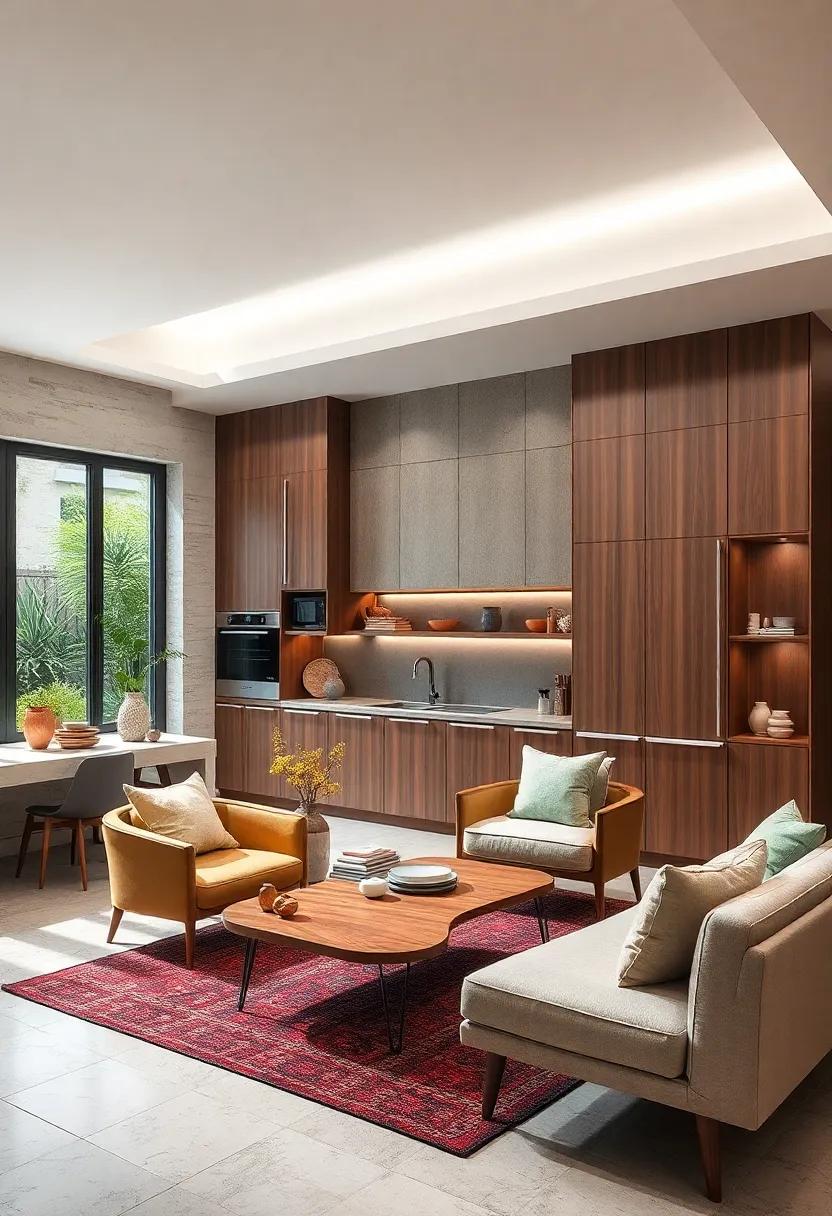
In today’s fast-paced world, a well-designed kitchen must not only be aesthetically pleasing but also integrate smart technology that enhances functionality and efficiency. Utilizing gadgets like smart refrigerators, which can track inventory and suggest recipes based on available ingredients, allows for effortless meal planning. Moreover, technology like touchless faucets and smart ovens enables a more hygienic and user-amiable cooking environment. Consider creating zones that incorporate these innovations seamlessly into your space, promoting both culinary creativity and ease of use.
To optimize the layout of your modern kitchen, focus on smart solutions that adapt to your culinary habits and lifestyle. Here are some essential technologies to explore:
- Smart Lighting: Adjustable LEAD lights that can be controlled remotely or via voice commands.
- IoT Appliances: Devices that connect to your smartphone, offering real-time updates and maintenance alerts.
- Smart Cookware: Pots and pans that can monitor cooking temperatures and times.
Integrating these features requires thoughtful planning.Below is a comparison table highlighting some key smart kitchen technologies:
| Technology | Benefits |
|---|---|
| Smart Refrigerator | Inventory management, recipe suggestions |
| Smart Oven | Remote preheating, precise temperature control |
| Touchless Faucets | Enhanced hygiene, hands-free operation |
Ventilation Matters: The Fine Balance Between Aesthetics and Functionality
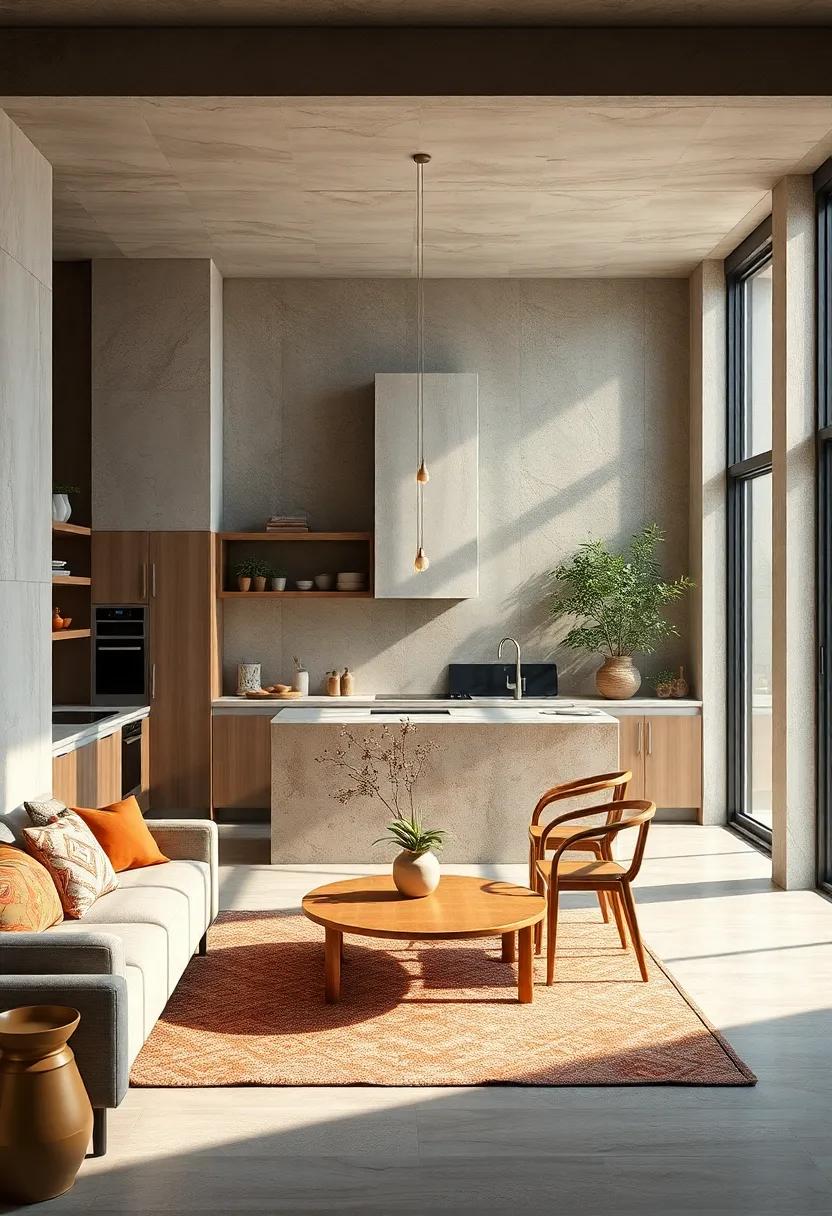
When designing a kitchen, the blend of aesthetics and functionality is paramount, with ventilation at the forefront of this delicate dance. Striking the right balance ensures that while the beauty of the space captivates,the air quality remains unhindered. Effective ventilation systems not only whisk away cooking odors and excess moisture but also play a pivotal role in maintaining temperature stability. A well-ventilated kitchen contributes to a healthier cooking environment, while seamlessly integrating with your overall design aesthetic. Achieving this synergy involves choosing the right features, such as:
- Range Hoods: An elegant focal point or a sleek minimalist design.
- Window Placement: Natural light and fresh air flow can enhance both mood and airflow.
- Open Layouts: Encourage circulation and visibility between cooking and dining areas.
Moreover, incorporating technology into kitchen ventilation solutions can elevate both convenience and design. Modern systems now offer sensor-activated fans and silent operation modes, preserving peace in the cooking space without compromising performance. When evaluating your kitchen layout, consider the types of ventilation that complement your style while serving practical purposes. A side-by-side comparison of customary vs. modern ventilation solutions can shed light on their respective advantages:
| Type | Advantages |
|---|---|
| Traditional Hoods |
|
| Modern Systems |
|
Personal Touches: infusing Your Unique Style into Kitchen design
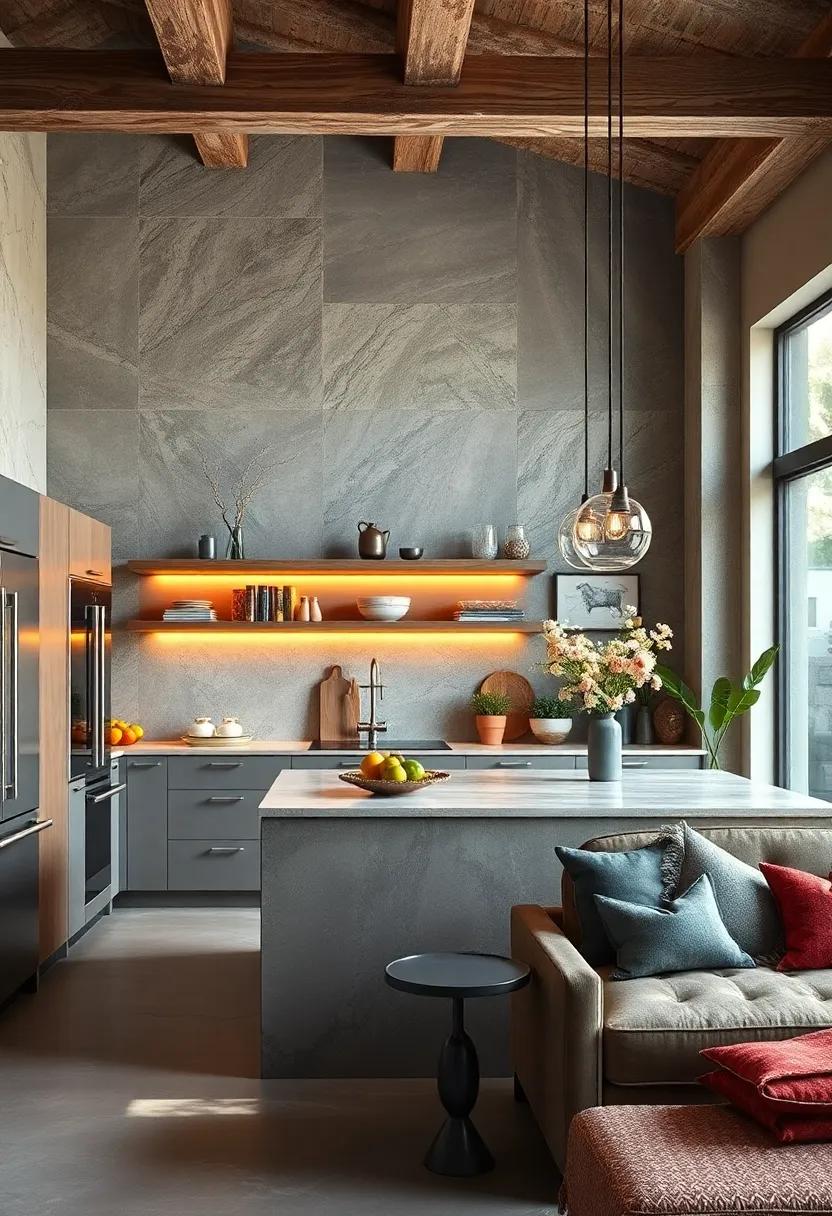
When designing your kitchen, embracing personal touches transforms functionality into artistry. Consider incorporating elements that reflect your personality—whether it’s a vibrant color palette, unique lighting fixtures, or custom cabinetry. Each of these choices conveys your style,making the kitchen feel uniquely yours. You might want to include:
- Artistic Wall Décor: Display local artists’ work or family photos to create a focal point.
- Handcrafted items: Use handmade pottery or textiles for a cozy, inviting atmosphere.
- Personalized Storage: Design drawers and shelves that cater to your cooking habits and favorite utensils.
Another way to integrate your personal flair is through functional decor. custom-made items such as cutting boards or spice racks not only serve a practical purpose but also enhance the aesthetic of your kitchen. Below, you can see a simple table demonstrating how to mix personalization with utility:
| Item | Personalization Idea | functional Benefit |
|---|---|---|
| Cutting Board | Engraved family name | Durable and easy to clean |
| Spice Jar Set | Hand-painted labels | Organized and accessible |
| Pot Rack | Customized shape and color | Maximizes space and displays cookware |
Flowing Elements: the Concept of Indoor-Outdoor Connections in Kitchens
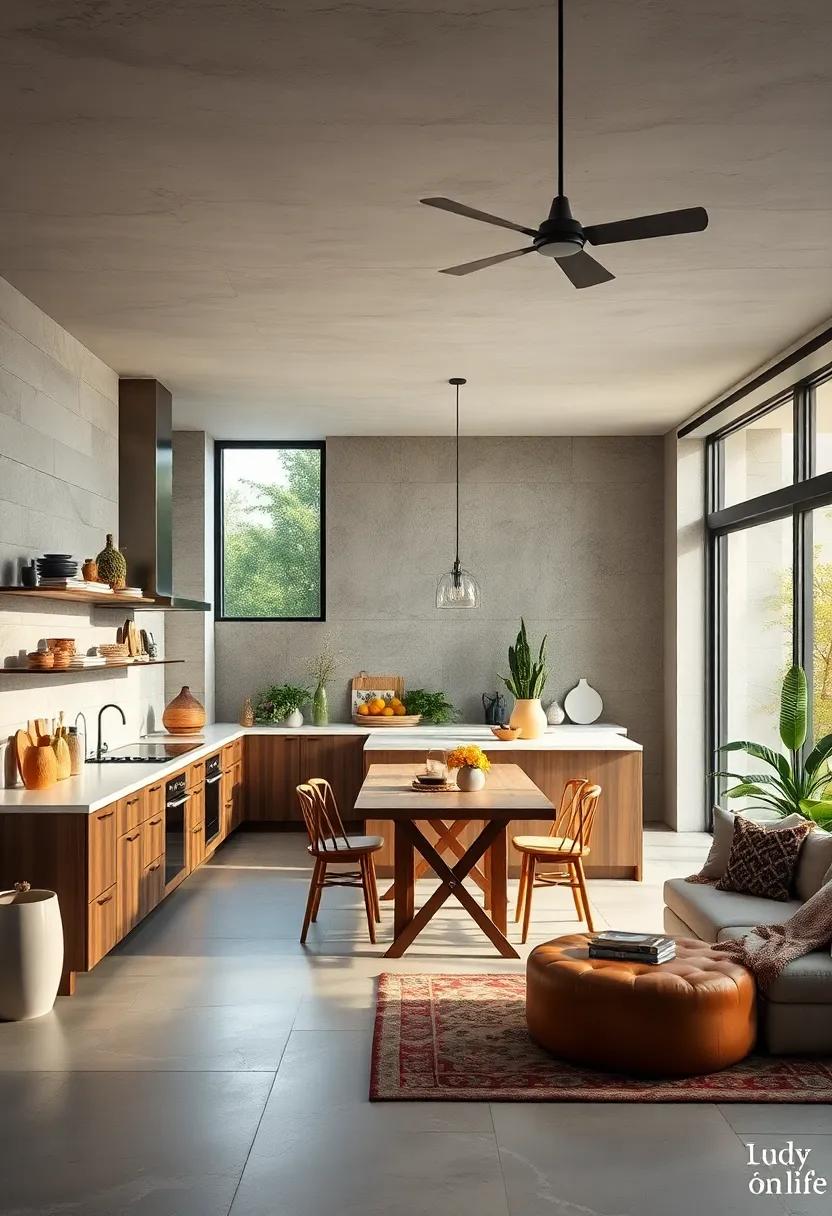
Designing a kitchen that blurs the lines between indoor and outdoor spaces invites a refreshing ambiance into the heart of the home. Consider large sliding glass doors that seamlessly transition between the kitchen and a patio or garden. These elements not only enhance natural light but also create a sense of openness, allowing culinary activities to extend outdoors. In addition to physical movement, the use of natural materials such as wood and stone in both areas can create a cohesive aesthetic that fosters tranquility and harmony.
To further integrate the two environments, outdoor cooking features can enhance the cooking experience while promoting social interaction. A simple setup might include elements such as:
- Outdoor barbecues for grilling delights
- Herb gardens for fresh seasonings just steps away
- Seating areas that encourage leisurely dining
As a practical consideration, it is indeed vital to incorporate weather-resistant materials in outdoor spaces, ensuring durability and ease of maintenance. In doing so, you create an inviting environment for gathering, cooking, and enjoying meals al fresco, enriching the overall culinary experience.
Seating Arrangements: Balancing Comfort and Style for Dining Experiences
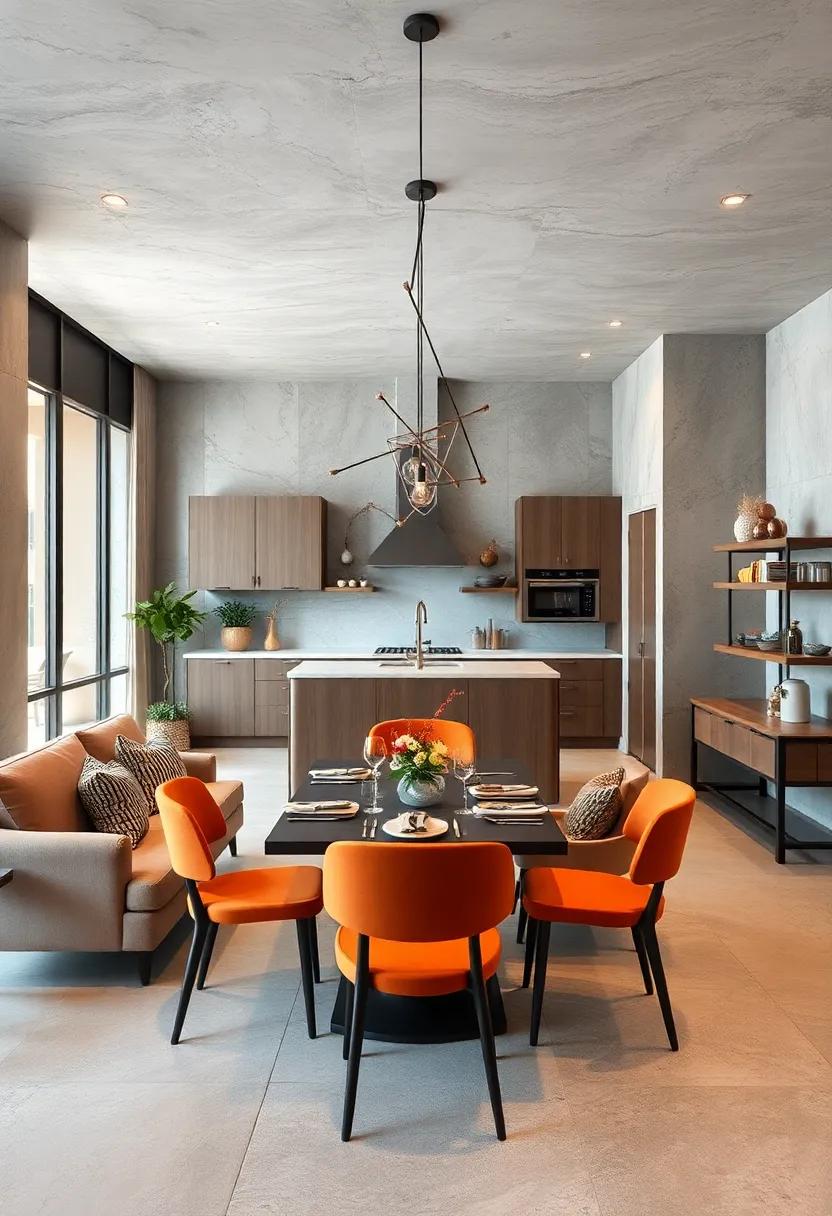
When it comes to creating a compelling dining experience, the right seating arrangements play a pivotal role in balancing comfort and aesthetics. Think beyond just functional chairs and tables; consider how the style of your seating can enhance the overall ambiance of the space. A carefully curated combination of textures and colors can invite guests to linger longer, transforming a meal into a memorable event. When selecting seating options, focus on ergonomics to ensure comfort, while also adhering to your design theme, be it rustic, modern, or eclectic.
In addition to the visual appeal, the layout of seating is crucial for promoting interaction and engagement among diners. Arrange your tables and chairs in a way that encourages conversation without sacrificing personal space. Here are a few elements to consider:
- table Size: Ensure tables are appropriately scaled to the number of diners.
- Separation: Allow for pathways between tables to improve flow and access.
- Height Variation: Use varying chair heights or even bar stools for a dynamic visual impact.
To visualize these arrangements, consider the table layout below:
| Table Type | Seat Capacity | Ideal Placement |
|---|---|---|
| Round Table | 4-6 | Center of the Room |
| Rectangular Table | 6-8 | Along a Wall |
| Bar Seating | 2-4 | Nooks or Countertops |
Appliance Placement: Strategically Positioning Equipment for Optimal Workflow
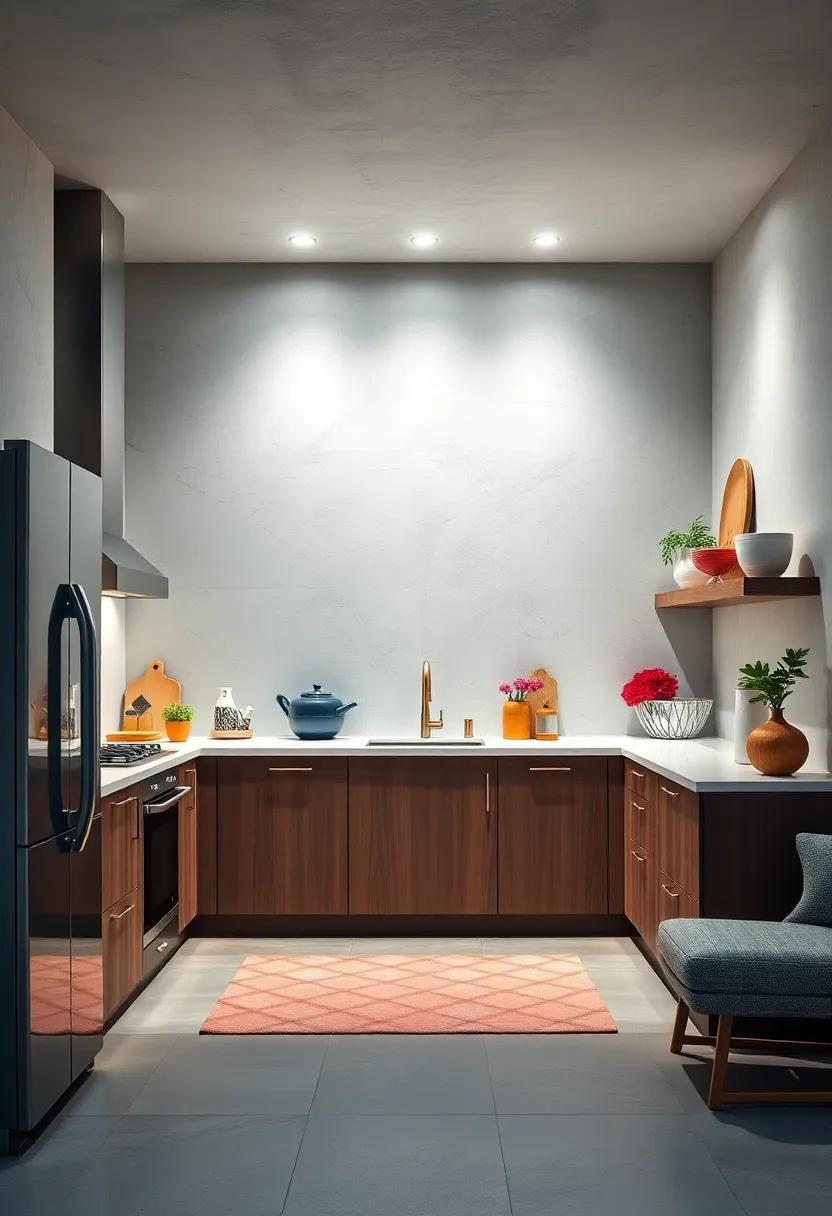
Efficient kitchen workflow relies heavily on the thoughtful positioning of appliances. When designing your culinary landscape,consider how your frequently used devices are arranged to reduce unnecessary movement.As a notable example, placing the refrigerator, sink, and stove in a triangular formation—frequently enough referred to as the kitchen work triangle—facilitates an optimal flow. this strategy not only minimizes the distance traveled but also encourages a seamless cooking experience.Thoughtful placements of other appliances, such as blenders and microwaves, can also aid in maintaining this efficient rhythm, offering both accessibility and convenience.
Additionally, different zones within your kitchen can further enhance productivity. Establishing areas for prep, cooking, and finishing allows for a streamlined process. Here are some tips for appliance placement to support these zones:
- Prep Zone: Position cutting boards and mixers near the sink for easy washing and ingredient prep.
- Cooking Zone: Ensure rapid access to pots, pans, and utensils near the stove, making meal preparation hassle-free.
- finishing Zone: Keep serving dishes and utensils by the dining area to allow for easy transitions from cook to host.
| Appliance | Ideal Placement | Purpose |
|---|---|---|
| Refrigerator | Near Prep Zone | Easy access to ingredients |
| Oven | Adjacent to Cooking Zone | Efficient baking and roasting |
| Microwave | Near Serving Area | Quick reheating options |
Accessibility: Designing Inclusive Kitchens That Welcome All Chefs and Cooks
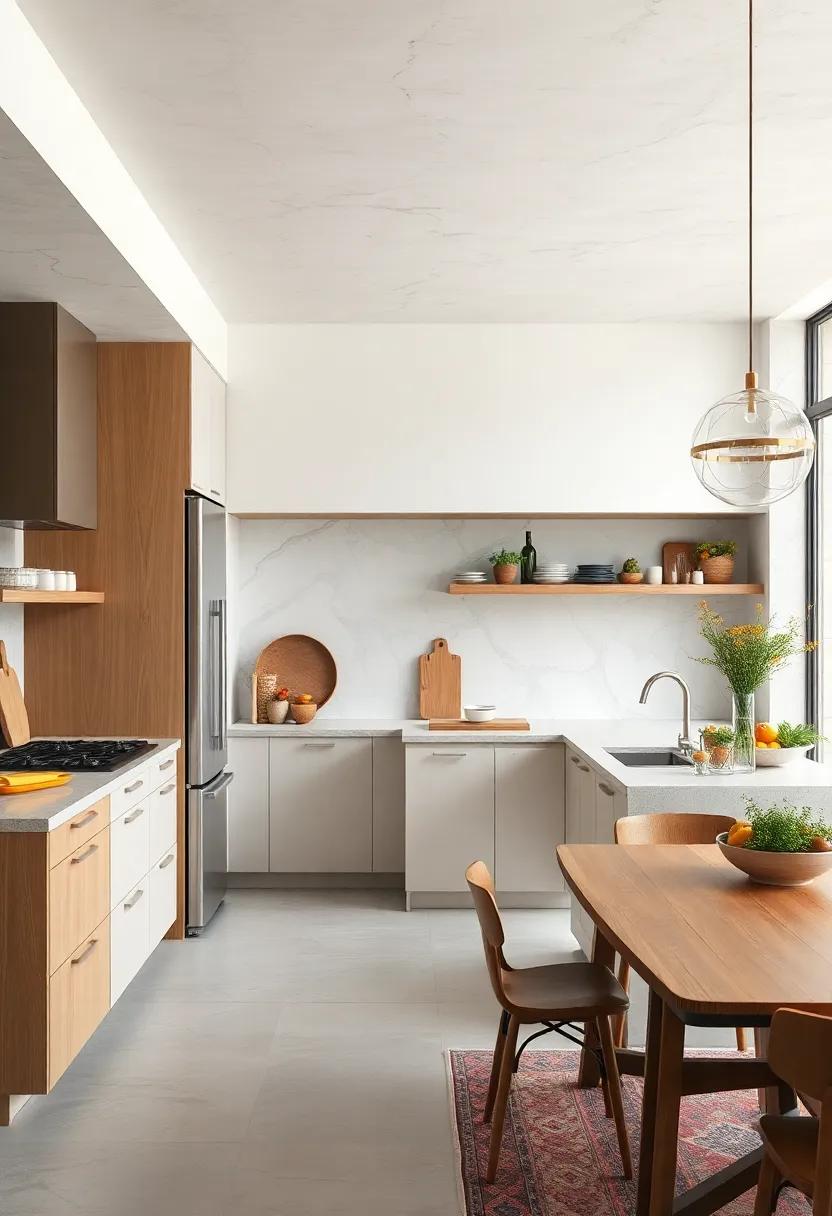
creating a kitchen that is accessible to all cooks is not just a matter of compliance with regulations; it’s an opportunity to celebrate diversity and encourage culinary creativity.to achieve this, consider the following elements:
- Counter Height: Ensure countertops are at varying heights to accommodate both standing and seated users.
- Work Triangle: Design the layout to facilitate a smooth workflow between the sink, stove, and refrigerator, making it easier for everyone.
- Storage Solutions: Incorporate lower shelving and pull-out drawers to make essential tools and ingredients easily accessible.
In addition to these functional designs, it’s crucial to incorporate aesthetics that resonate with all users. Consider:
- lighting: Use layered lighting to enhance visibility, ensuring no one feels dimmed by shadows in the cooking zone.
- Color Choices: Opt for high-contrast colors to assist those with visual impairments, creating a more navigable and inviting environment.
- Non-Slip Flooring: choose flooring materials that are both safe and easy to clean to reduce the risk of accidents.
Inspiration from Culture: How Global Designs Influence Kitchen styles
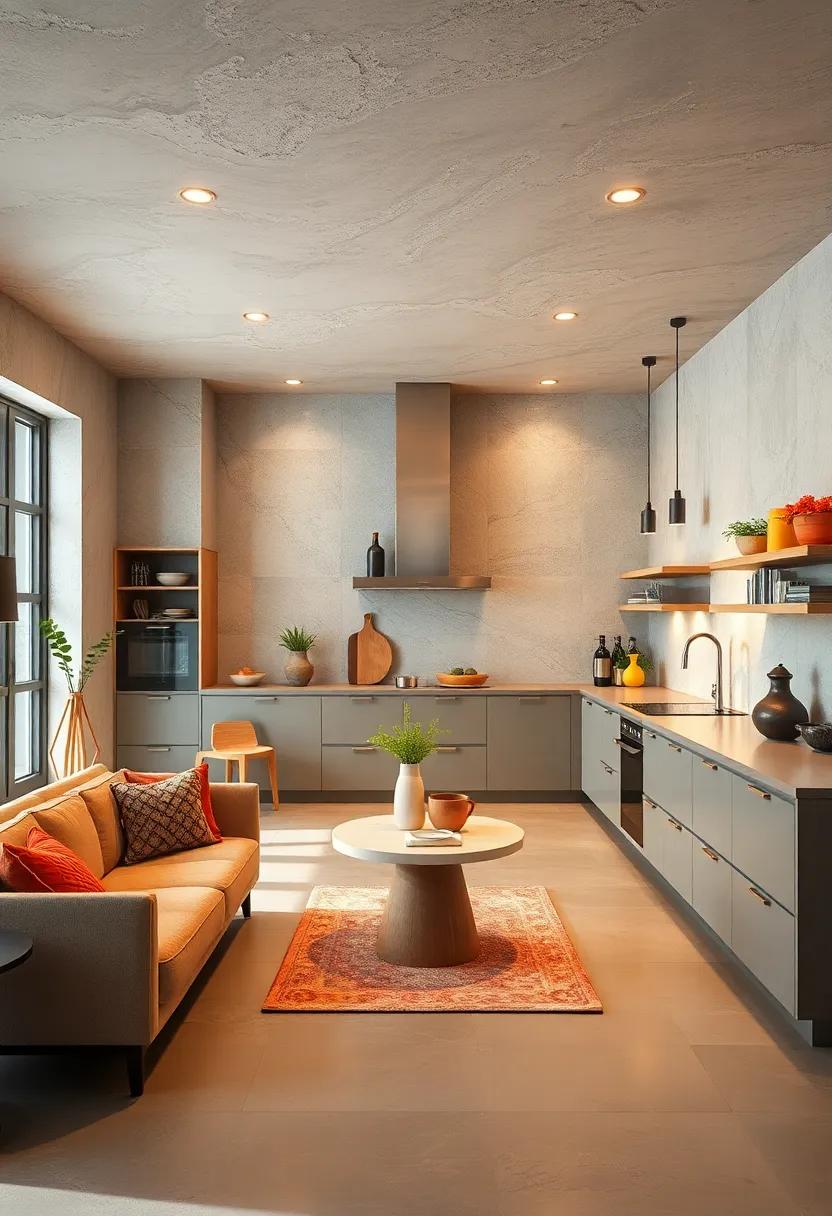
Culture has always played a pivotal role in shaping design aesthetics, particularly in the realm of kitchen spaces. Around the world, kitchens serve as the heart of the home, where culinary traditions are passed down through generations.For instance, Mediterranean influences often introduce vibrant blues and warm earth tones, creating a serene atmosphere infused with natural light. In contrast, Japanese kitchens emphasize minimalist design, focusing on clean lines and multifunctional spaces that promote harmony and efficiency. This cultural interplay inspires homeowners to experiment with colors, materials, and layouts, ultimately enriching their cooking environments.
Furthermore, blending global styles can lead to innovative kitchen designs that reflect both personal taste and cultural heritage. The use of open shelving borrowed from Scandinavian design allows for easy accessibility and personal expression through collected dishware. Incorporating Mexican tile work adds a touch of vibrancy and craftsmanship, while French bistro elements promote an inviting dining atmosphere. Various cultures offer unique solutions to common kitchen challenges,encouraging modern homeowners to embrace a mosaic of influences that celebrate diversity and functionality.
The Art of Detailing: Adding finishing Touches for Culinary Delight
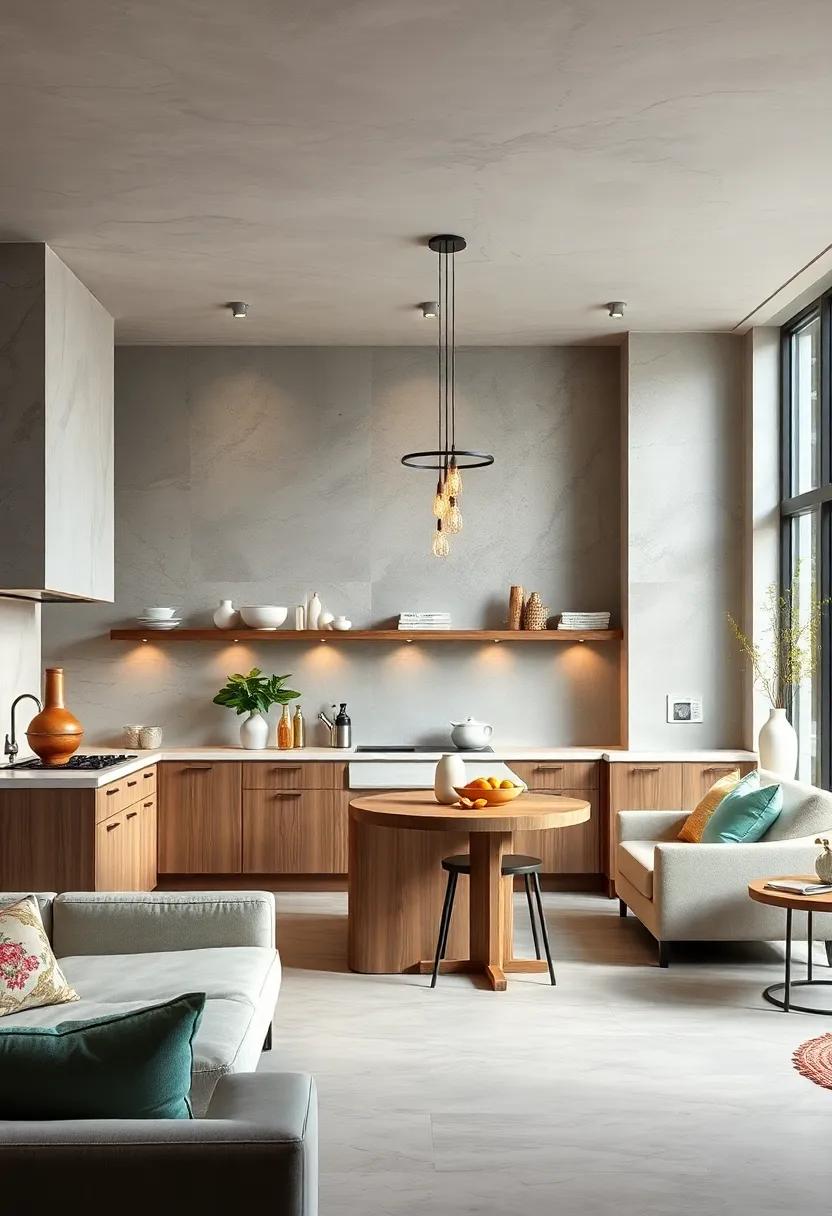
When it comes to elevating a dish from simple to spectacular, the secret often lies in the finishing touches. Enhancing a meal involves a delicate balance of flavors, colors, and textures, all meticulously curated to create a sensory experience. Here are a few essential elements that can take your culinary creations to the next level:
- Fresh Herbs: A sprinkle of chopped herbs adds vibrant color and fresh flavor.
- Citrus zest: A hint of lemon or lime zest can brighten up rich dishes.
- Garnishes: Edible flowers or microgreens create visual appeal.
- Drizzles and Sauces: Artistic sauces can add depth and charm to your plating.
along with careful garnishing, the arrangement of items on the plate plays a crucial role in presentation. Utilizing the rule of thirds can guide your placement, allowing for a balanced visual experience. Consider using different heights and layering components to enrich the plate. For effective institution, here’s a simple table outlining how to strategize your plating:
| Component | Purpose | Example |
|---|---|---|
| Main Protein | Focal point of the dish | Grilled chicken breast |
| starch | Base layer or foundation | Truffle mashed potatoes |
| Vegetables | Color and nutrition | Sautéed asparagus |
| Sauce | Flavor enhancer | balsamic reduction |
Sustainable Design: incorporating Eco-Friendly Practices Into Kitchen Layouts
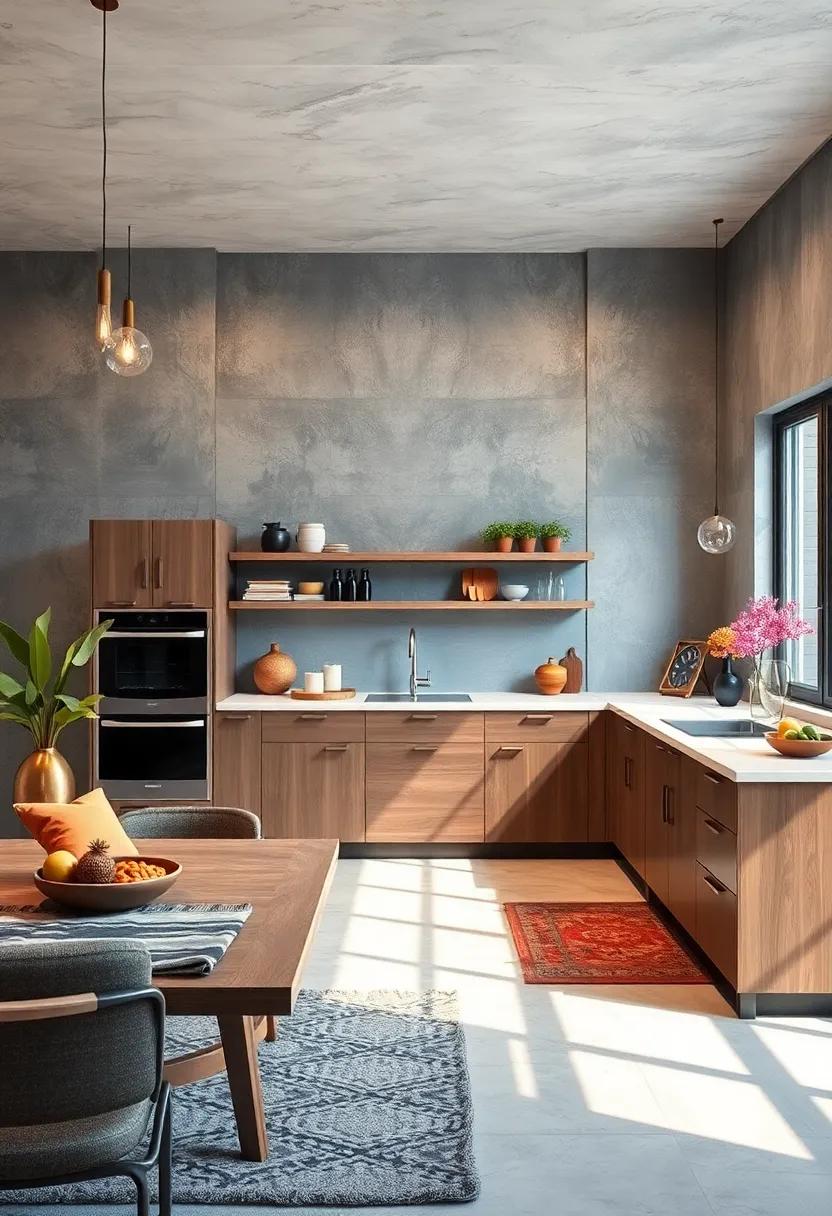
In the quest for a harmonious kitchen, integrating eco-friendly practices into the layout not only fosters sustainability but also enhances the cooking experience.To begin with, consider sourcing materials that have a lower environmental impact. choose cabinetry made from reclaimed wood or bamboo, which are not only renewable resources but also add a touch of natural beauty. Additionally, opting for energy-efficient appliances can significantly reduce energy consumption. Look for items that are Energy Star certified, ensuring that your kitchen functions efficiently while minimizing waste.
Moreover, the use of sustainable practices extends beyond materials; it’s also about smart layouts that promote better energy flow and usability. By incorporating features like modular storage solutions and multi-functional islands, you can create an organization system that minimizes movement and maximizes efficiency. Think about adding a small herb garden or a compost bin as part of your kitchen design, contributing to a circular economy even in your cooking space. Here’s a simple table that outlines some effective sustainable kitchen design elements:
| Design Element | Benefits |
|---|---|
| Reclaimed Wood Cabinets | Reduces deforestation and adds character |
| Energy-Efficient Appliances | Lower energy bills and reduced carbon footprint |
| Induction Cooktops | Faster cooking,less heat waste |
| water-Saving Faucets | Conserves water without sacrificing performance |
Visual Harmony: Merging Functionality with Aesthetic Appeal in Kitchens
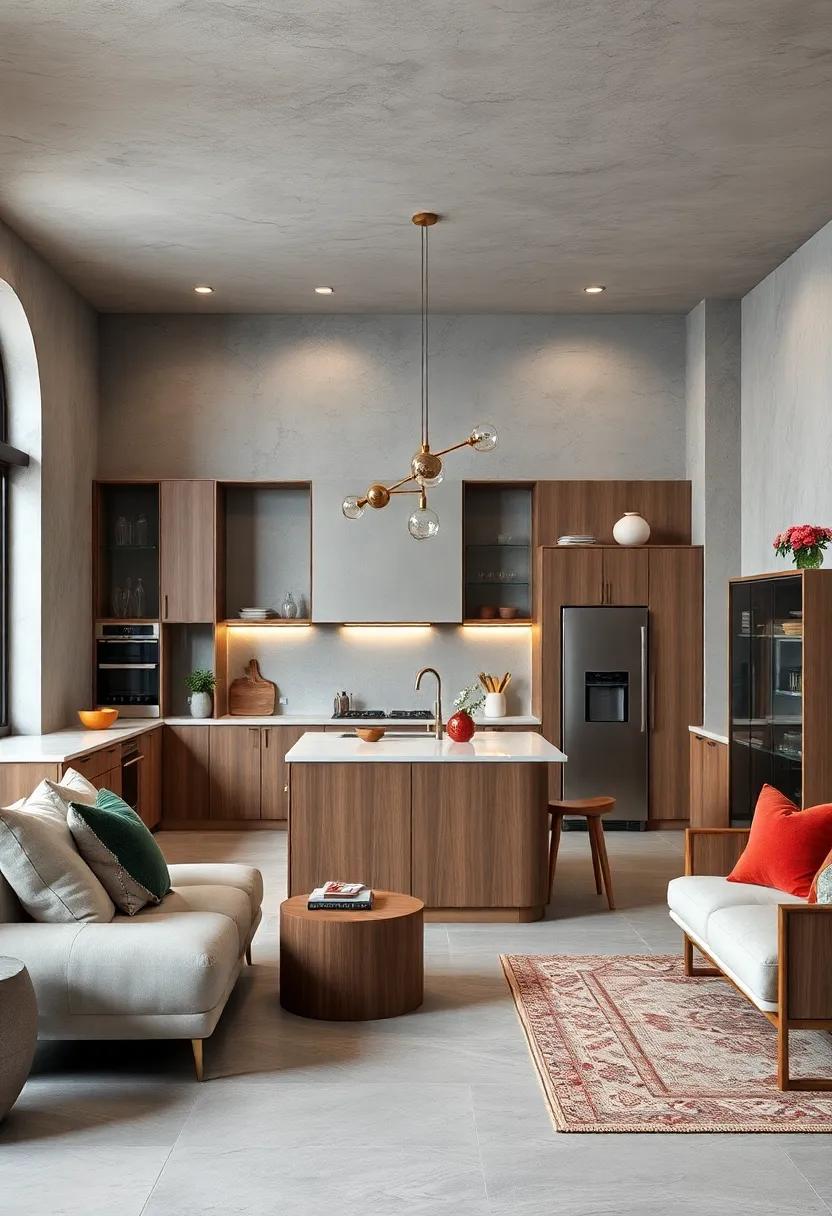
Creating a kitchen that is both functional and visually pleasing requires a delicate balance,one where every element works in concert to enhance the user experience. To achieve this harmonious blend, consider the integration of color schemes, textures, and materials that reflect your personal style while also serving practical purposes. As an example,warm wooden accents can add a cozy feel,while sleek metal finishes might cater to a more modern aesthetic. Thoughtful placement of these elements helps cultivate an inviting atmosphere that inspires creativity and comfort during meal preparation.
Moreover, successful kitchen design goes beyond mere aesthetics; it involves carefully planning the layout to facilitate effortless movement and accessibility. Elements such as the kitchen work triangle, which emphasizes the relationship between the stove, sink, and refrigerator, can drastically improve workflow efficiency. Additionally, incorporating open shelving or strategically placed cabinets can enhance the visual appeal and maintain easy access to essential cooking tools and ingredients. Here’s a quick overview of how to enhance both functionality and visual delight:
| Design Element | Functionality | Aesthetic Appeal |
|---|---|---|
| Lighting | Task & ambient lighting for safety | Creates mood and highlights features |
| Color Palette | Reflects cleanliness and opens space | Conveys personal style and warmth |
| Material Selection | Durable surfaces for easy maintenance | Textures add depth and character |
Soundscapes: The Impact of Acoustic Design in Culinary Spaces
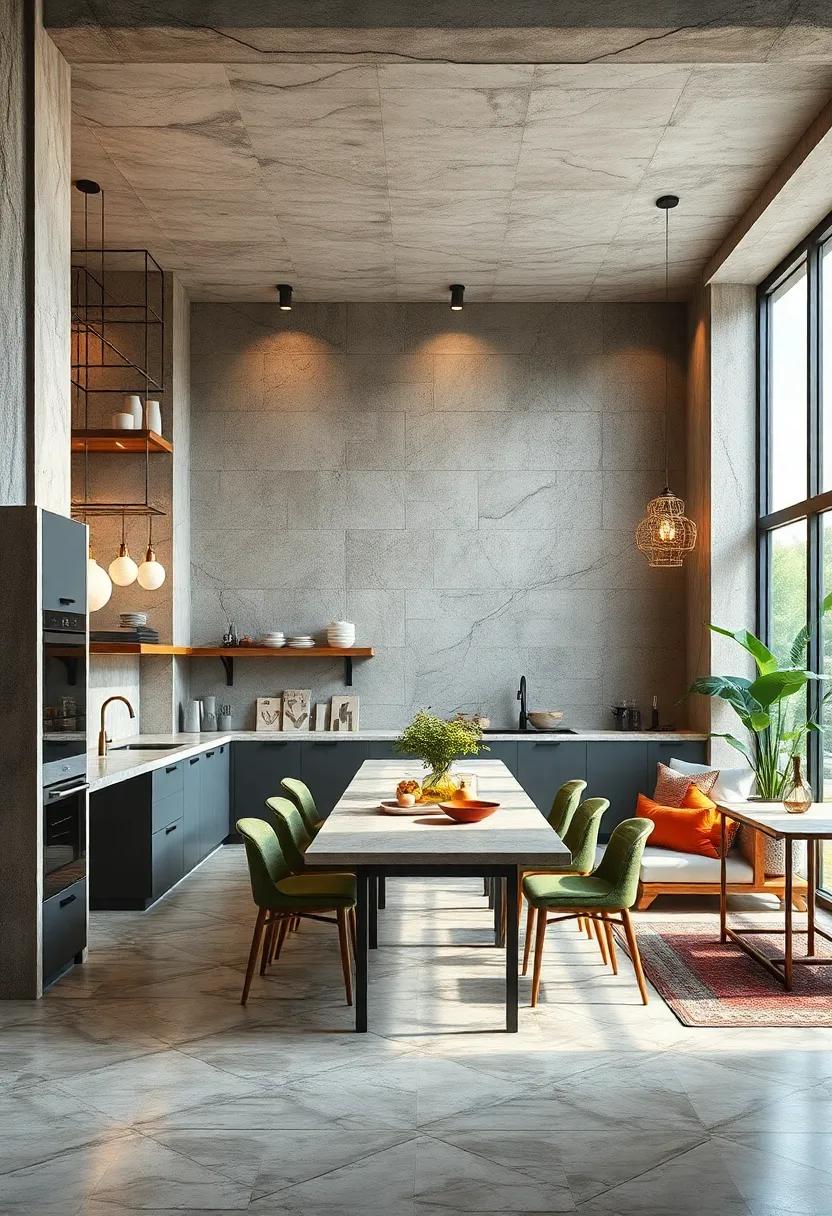
The soundscape of a culinary space plays a pivotal role in shaping the overall dining experience. By carefully considering acoustic design, restaurant owners can create an atmosphere that enhances the enjoyment of food and encourages conversation. For example, the use of soft furnishings and acoustic panels can help absorb excessive noise, allowing guests to engage in intimate discussions without the distraction of clattering dishes and loud chatter.Additionally, the integration of design elements such as textured walls and strategically placed plants can contribute to a pleasant auditory environment, ensuring that each meal is not only a feast for the palate but also for the ears.
Moreover,the strategic layout of a kitchen can significantly influence the culinary soundscape. The organization of equipment, from ventilation hoods to appliances, directly affects the sound levels in both the kitchen and dining areas. Properly zoning these elements can minimize intrusive sounds and create a harmonious culinary rhythm. Consider a well-designed kitchen with designated zones for prep,cooking,and service,which allows for a smoother workflow and reduces cacophonous interruptions. Below is a simple breakdown illustrating key acoustic considerations in kitchen layout:
| Element | Impact on Acoustics |
|---|---|
| Soft Furnishings | Absorb sound waves, reducing noise disturbance. |
| Acoustic Panels | Minimize echo and enhance sound clarity. |
| Plant Installations | Dampens noise and beautifies space. |
| Strategic Zoning | reduces noise overlap between kitchens and dining areas. |
Navigating Challenges: Solutions for Small and Irregular Kitchen Layouts
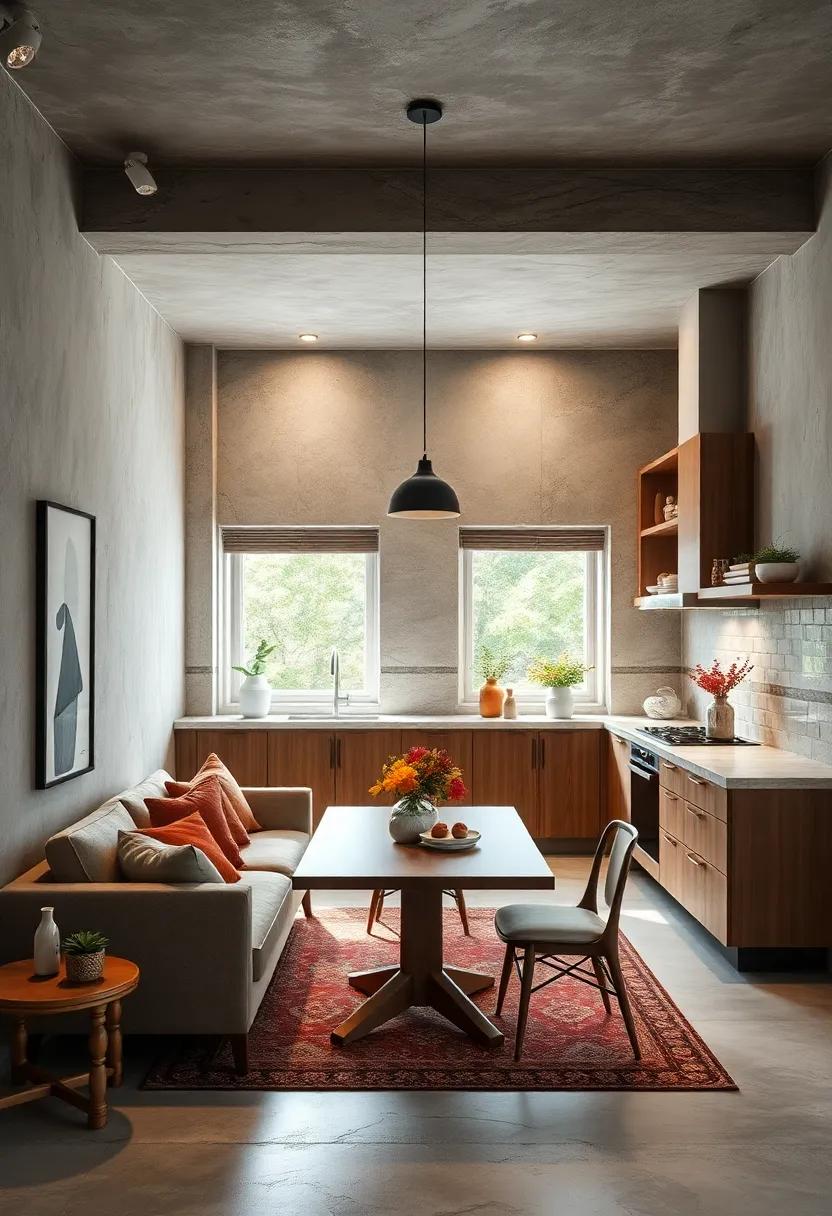
Small and irregular kitchen spaces often present unique challenges, but with innovative solutions, they can become culinary sanctuaries. To maximize functionality in these compact environments, consider multi-purpose furniture such as drop-leaf tables or rolling carts. These pieces can be tucked away or expanded as needed, ensuring that you maintain an open and inviting atmosphere. Additionally, vertical storage options like wall-mounted shelves or pegboards not only save precious floor space but also keep essential tools within arm’s reach. Color coordination and strategic lighting can also enhance the perception of space, making the kitchen feel larger and more cohesive.
When designing a kitchen with irregular layouts, embracing the kitchen work triangle concept is crucial. Position the stove, sink, and refrigerator in a triangular configuration to create an efficient workflow, even in tight corners or angled spaces. Using custom cabinetry can help you harness every nook and cranny, providing tailored storage solutions that align with your cooking habits. Consider incorporating corner drawers or pull-out shelves to optimize or else unusable areas. Here’s a quick guide to essential considerations when tackling irregular kitchens:
| Element | Solution |
|---|---|
| Compact Workspaces | Drop-leaf & rolling furniture |
| Storage | Vertical shelves & pegboards |
| Workflow | Kitchen work triangle |
| Custom storage | Corner drawers & pull-out shelves |
The Psychology of Space: How Layout Affects Cooking and Dining Experiences
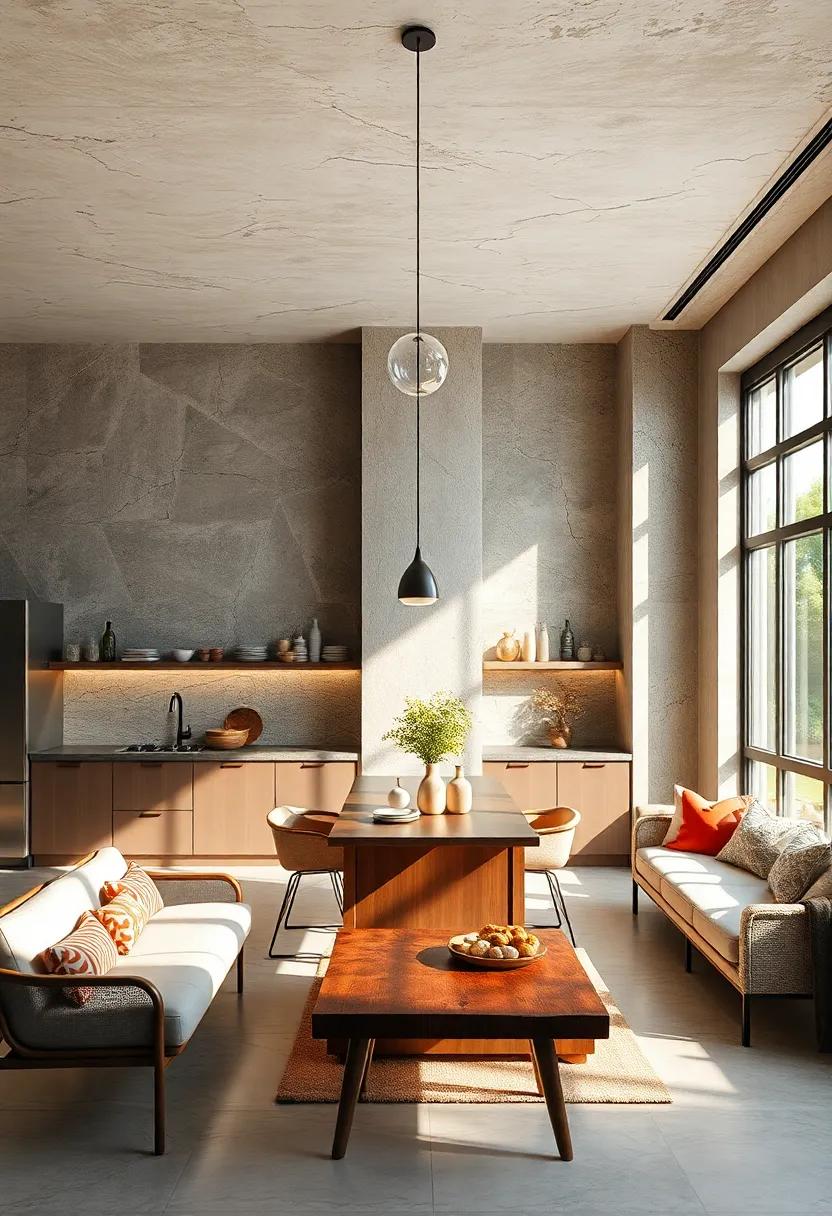
The layout of a kitchen holds a profound influence on the cooking and dining experience, shaping not just the functionality but also the ambiance of the space. A well-thought-out design can enhance efficiency, allowing chefs to maneuver with ease and focus on the culinary artistry at hand. Elements that play a vital role in achieving this harmony include:
- Workflow Zones: Dividing the kitchen into distinct areas for preparation, cooking, and cleaning streamlines tasks and minimizes movement.
- Accessibility: Thoughtfully placing frequently used items within arm’s reach reduces frustration and encourages a more enjoyable cooking experience.
- Seating Arrangements: Arranging dining spaces to promote conversation enhances the social aspect of meals, creating connections over food.
Furthermore, the psychological impact of space cannot be underestimated. open layouts typically encourage communal cooking experiences, where family and friends gather, fostering a sense of togetherness. Conversely, compact areas can create intimacy but might lead to feelings of confinement for some. Consider the following factors when designing a kitchen to elevate the dining experience:
| Design Element | Psychological Impact |
|---|---|
| Open Space | Encourages collaboration and a communal atmosphere. |
| Natural Light | Boosts mood and enhances sensory experiences during cooking. |
| Color Schemes | Affects appetite and feelings of comfort and warmth. |
Seasonal Adaptation: Designing Kitchens for Year-round Versatility
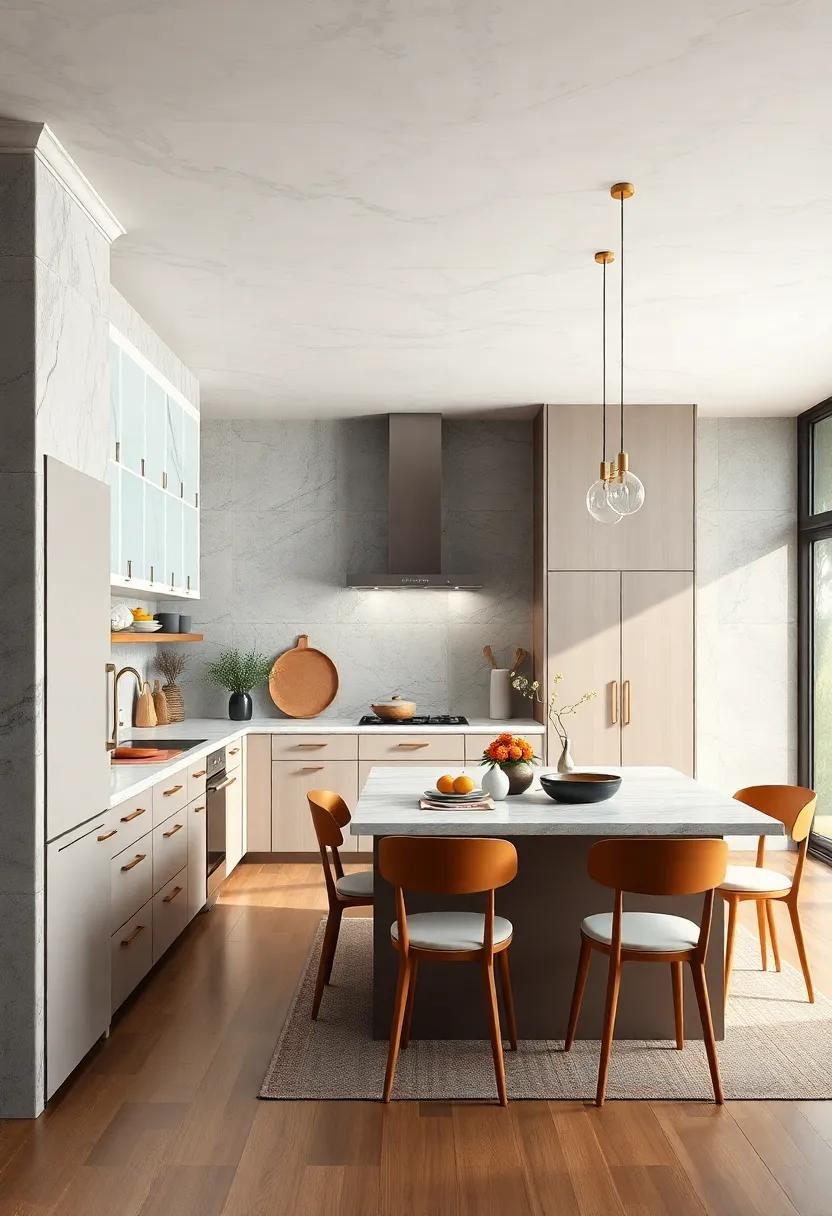
Creating a kitchen that seamlessly transitions through the seasons involves a thoughtful approach to design and functionality. A flexible layout should consider different cooking methods and entertaining styles prevalent throughout the year. As an example, incorporating movable islands, foldable tables, and multi-functional appliances allows for easy reconfiguration, whether you’re preparing a cozy winter stew or hosting a summer barbecue. These features promote movement and interaction,essential elements whether it’s friends gathered around a rustic kitchen island or family enjoying a Sunday brunch. Key considerations include:
- Natural Light: Maximizing sunlight through large windows or skylights helps create a warm ambiance in winter and fresh air in the summer.
- Material Selection: Durable, heat-resistant surfaces like quartz or concrete can withstand seasonal wear while adding an inviting aesthetic.
- Storage Solutions: Adjustable shelving and hidden compartments easily adapt to seasonal kitchenware and appliances.
the seasonal adaptability of kitchen designs can also be enhanced by strategic zoning. Thoughtful placement of cooking, prep, and cleaning areas ensures that the space remains efficient at all times. Such as, a sweeping open layout enables gatherings, while well-placed dividers can create cozy nooks during quiet family evenings. Consider the following aspects when organizing your kitchen zones:
| Zone | Functionality |
|---|---|
| Cooking Zone | proximity to stove and pantry for efficient meal prep |
| Cleanup Zone | Conveniently located near the sink and dishwasher |
| serving Zone | Designed for easy access to serving dishes and platters |
Creating a Culinary Sanctuary: Designing Retreats Within Your Kitchen Space
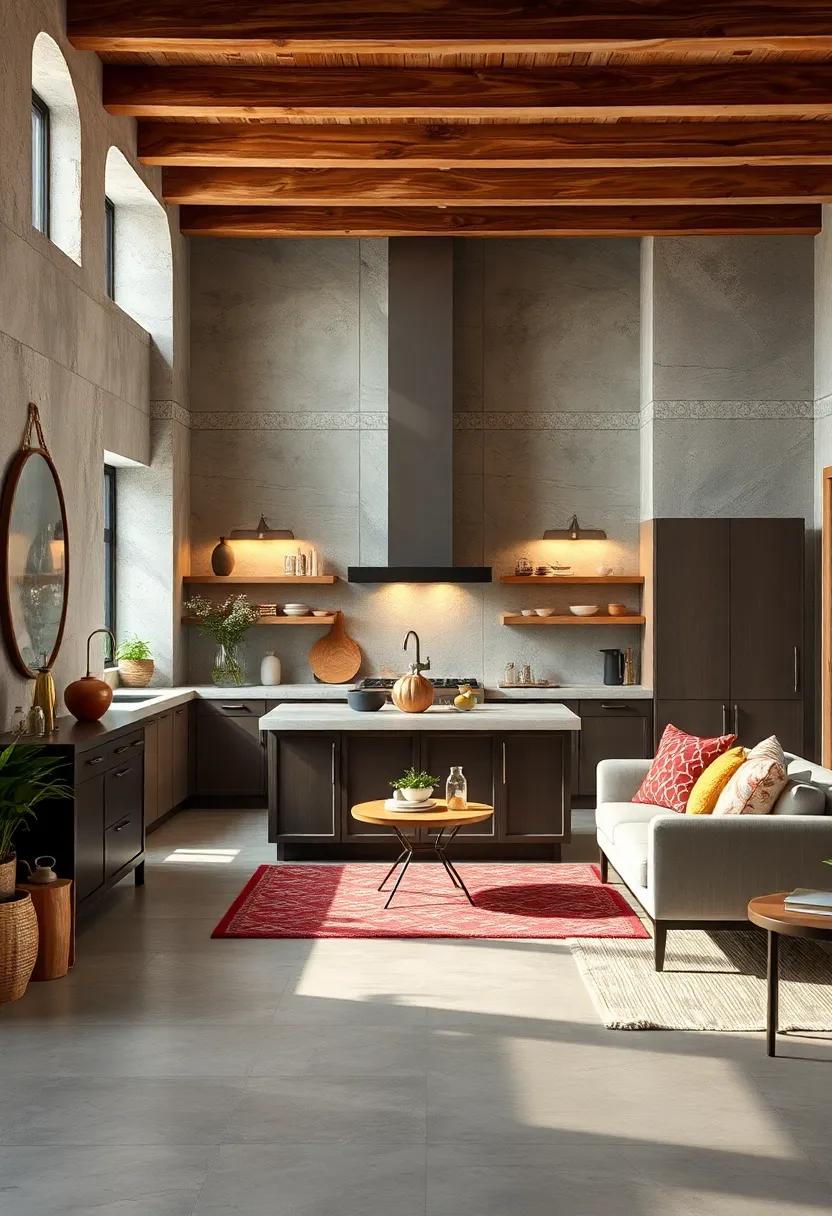
Imagine stepping into a kitchen that feels like a personal sanctuary, a space where culinary creativity flows effortlessly and each corner is designed to inspire. Creating zones within your kitchen can transform it from a mere cooking area into a retreat that caters to your needs and stimulates your senses. Consider implementing the following aspects to enhance your kitchen environment:
- Functional Zones: Designate areas for prep, cooking, and cleaning to streamline your workflow.
- Natural Elements: Incorporate greenery or herbs to breathe life into the space and improve air quality.
- Ambient Lighting: Opt for adjustable lighting to suit different cooking experiences,whether you’re whipping up a quick breakfast or hosting a dinner party.
Furthermore,the choice of materials and color schemes can greatly influence the atmosphere of your culinary haven. Warm woods, cool metals, and vibrant colors can coalesce to create a harmonious palette that reflects your personal style while enhancing functionality. A well-planned layout not only maximizes space but also encourages interaction and creativity, making every cooking session an opportunity to relax and experiment.
| Element | Impact on Space |
|---|---|
| Natural Light | Enhances mood, reduces energy costs. |
| Open Shelving | encourages organization, showcases culinary creativity. |
| Multifunctional Islands | Serves as prep space, dining area, and storage. |
Balancing Tradition and Modernity: Blending Classic Designs with Contemporary Elements

In the culinary world, the aesthetics of a kitchen reflect a unique blend of history and innovation.Imagine a space where classic shaker cabinets harmoniously complement sleek,stainless-steel appliances. Integrating heirloom designs with modern functionality allows for a kitchen that honors its roots while embracing the conveniences of the present.A subtle approach to blending styles can include carefully chosen elements such as traditional wooden countertops paired with contemporary lighting fixtures, creating an ambiance that invites both nostalgia and modern creativity.
Moreover,the layout plays a vital role in achieving this balance.By prioritizing open spaces and functional design, one can enhance both efficiency and aesthetic appeal. Consider the following key design elements when harmonizing classic and modern styles:
- Materials: Use a mix of natural woods and industrial metals.
- Textures: Combine smooth finishes with tactile surfaces.
- Colors: Opt for a neutral palette with vibrant accent colors.
- Accessories: Incorporate vintage accessories with contemporary functionality.
| Classic Element | Modern Element |
|---|---|
| Butler’s pantry | Open shelving units |
| Ceramic tiles | Glass backsplashes |
| Farmhouse sink | Undermount sinks |
| Wooden beams | Minimalist pendant lighting |
Culinary Inspiration Zones: Designing Spaces That Spark Creativity and Innovation
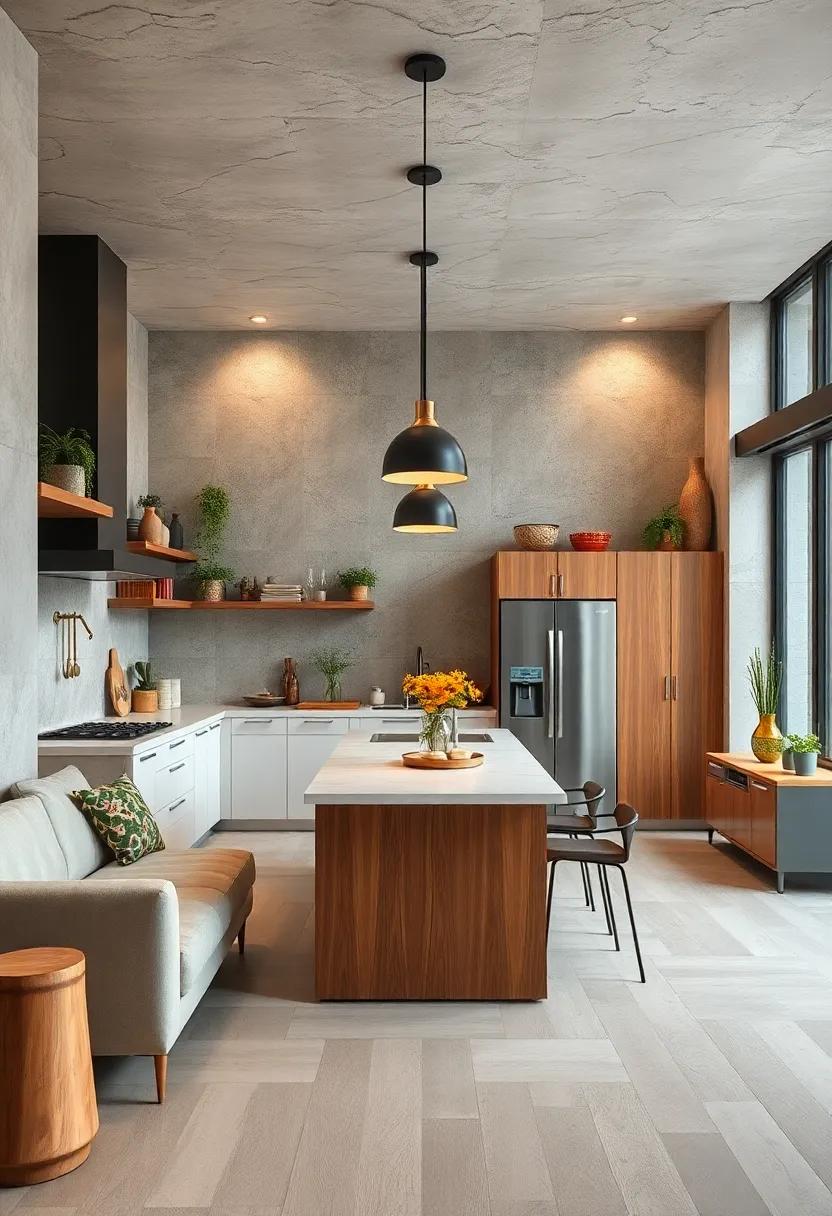
In the heart of every home, the kitchen stands as a sanctuary of culinary creativity. To ignite inspiration and unleash innovation, it is essential to design spaces that cater to both functionality and creativity. Consider incorporating multi-functional zones that serve distinct purposes while fostering a seamless workflow. Creating areas dedicated to preparation, cooking, plating, and even casual dining can enhance the cooking experience. Utilize color palettes that stimulate the senses—warm tones to energize, cool hues to calm, and vibrant accents to inspire spontaneity.The design should also emphasize natural light and incorporate elements that remind us of the outside world—think indoor herb gardens or large windows that frame garden vistas.
Moreover, the arrangement of tools and appliances should support intuitive movement and accessibility. A well-designed kitchen layout might include:
- Zone-Based Layout: Organize spaces by culinary processes.
- Flow Optimization: Create clear pathways to minimize movement.
- Smart Storage Solutions: Use vertical space and hidden compartments.
By embracing these strategies, a culinary environment emerges where experimentation flourishes.A special table for ingredient organization or a wall-mounted chalkboard can serve as canvases for new ideas and fresh recipes, banishing the mundane and inviting the extraordinary into meal prep.
Plan for Growth: Designing Kitchens That Evolve with Culinary Trends and Needs

As culinary trends shift and evolve, the kitchen must adapt to the ever-changing landscape of cooking and entertaining. An effective kitchen design allows for flexibility—the ability to transition from a simple family meal to hosting an elaborate dinner party without missing a beat. To achieve this, consider incorporating elements such as:
- Modular Storage Solutions: Adjustable shelves and expandable cabinets make it easy to accommodate various kitchen gadgets and ingredients.
- Multi-functional Islands: Islands should serve multiple purposes, from meal prep to dining, to reduce clutter and enhance workflow.
- Dynamic Lighting: Adjustable lighting can change the atmosphere from radiant and energetic to soft and warm depending on the occasion.
Additionally, a well-planned kitchen layout takes into account the importance of movement and flow. The placement of appliances and workstations should support a natural progression through the cooking process. A commonly used model to illustrate this is the kitchen work triangle, which strategically positions the fridge, sink, and stove to minimize unnecessary steps. To further visualize this concept, consider the following table showcasing optimal distances:
| Appliance | Optimal Distance (in feet) |
|---|---|
| Fridge | 4-9 |
| Sink | 4-9 |
| Stove | 4-9 |
This design ideology not only enhances functionality but also ensures that your kitchen remains a hub of creativity and innovation, adapting to both personal culinary preferences and broader trends in the food industry.
Future Outlook
In the symphony of culinary creation,the kitchen stands as both stage and audience,where the notes of strategy and aesthetics intertwine to orchestrate a seamless cooking experience. as we’ve explored the intricate dance of kitchen layout design, we’ve uncovered how practical considerations meet artistic flair, fostering an environment that inspires and elevates culinary endeavors.
Whether you’re a seasoned chef or a passionate home cook, the principles of harmony in kitchen design can transform an ordinary space into a sanctuary of creativity and efficiency. By understanding the interplay of form and function, you are empowered to design a kitchen that resonates with your personal style while accommodating the rhythm of your culinary choreography.
In closing,the art and science of kitchen layout design is not merely about arranging appliances and surfaces; it’s about crafting a space that nurtures your passion for cooking. So, as you embark on your own design journey, remember that every curated inch contributes to the symphony of flavors awaiting your discovery.Let your kitchen be a canvas for innovation,where the essence of cooking and the joy of sharing come together in perfect harmony.
As an Amazon Associate I earn from qualifying purchases.

